








Low enrollment resulted in closure of Potrero Hill’s only comprehensive high school, International Studies Academy (ISA), which had been located at 655 De Haro Street, at the end of the last academic year. The campus had experienced declining registrations for several years.
Once serving grades sixth through 12, a phase-out of middle school grades began in 2013, with the dropping of sixth grade and subsequent grades each year thereafter. In 2015/16, enrollment in remaining grades nine to 12 had fallen to 129 students, only 100 of whom were slated to continue at ISA this fall. ISA had chronically high absent rates as well. In 2015, 38 percent of the student body missed at least 10 percent of the academic year, for excused or unexcused reasons.
With enrollment at John O’Connell

High School in the Outer Mission also dropping, from 451 to 353 over the previous two years, school officials merged the two schools last summer. According to Gentle Blythe, San Francisco Unified School District (SFUSD) spokesperson, 80 of the ISA students chose to transfer to O’Connell, which is a mile away for the defunct ISA campus. The other 20 were given highest priority in choosing alternative schools. The numbers included 47 students heading into 10th grade, 41 into 11th and a dozen into 12th.
“Both communities recognized the need for larger enrollment numbers to increase access to course offerings and to bring their vision of integrated labs and project-based learning to fruition,”
Blythe explained, in an email to the View.
SFUSD School Board vice president Shamann Walton said that O’Connell’s curriculum includes programs in carpentry, technology and culinary arts, in addition to college prep. “O’Connell has been innovative in its approach to high school education,”
 BY JACOB BOURNE
BY JACOB BOURNE
Numerous items are caged behind glass doors at the Potrero Center Safeway, dissuading some would-be shoppers from patronizing the store.
“My family has stopped shopping there,” commented J.R. Eppler, Potrero Boosters president. “Too many of the items, including infant formula, that we went specifically to Safeway for, are now behind lock and key.”
Around 4 p.m. on a Monday last month the Center’s parking lot was near capacity; a steady stream of shoppers filed in both directions through Safeway’s doors. Inside, a security guard stood posted alongside an employee, both checking exiting patrons’ receipts.
Though the store was busy with shoppers, the aisles were clean, wellstocked, easy to navigate and contained fresh-looking goods. However, few store staff was visible outside the registers. About a year ago, the Potrero Center Safeway began locking up select items behind reinforced glass cabinets, including infant formula, soap, moisturizers, cleansers, dental
care products, shaving paraphernalia, over-the-counter drugs, and alcoholic beverages. Long stretches of some aisles are behind glass.
A View reporter waited nine minutes to gain access to a single bar of premium-brand soap, as all Safeway representatives were otherwise engaged. Because so much of the aisle was behind glass, no other shopping could be done while waiting. During that time several calls for assistance in the locked alcohol section were heard over the intercom. It appeared that not all employees were able to unlock the cabinets; a special service call had to be made for designated staff with keys.
One customer, gazing at the many items beyond reach, said he’d only recently noticed the practice of securing merchandise. Though he understood the need to lockup alcohol, protecting the rest seemed unnecessary, he said, especially as most of the items can be found unlocked at Walgreens stores. While the store’s items were protected, its shoppers less so. Unlike many retailers and grocery stores, the
CRIME continues on page 5
he said. “In this case, merging was most appropriate, in that the two schools shared a similar demographic.”
ISA’s closing leaves Downtown High School, a continuation school for students deemed at risk of not graduating, as Potero Hill’s only high school.
ENOLA continues on page 5
In fiscal year (FY) 2016, the City and County of San Francisco’s budget increased by $650 million, to $9.6 billion. In FY 2017, expenditures will rise by another $135 million, to roughly $9.7 billion.
The budget reflects approximately $35 million in San Francisco Board of Supervisor cuts from Mayor Edwin Lee’s proposed spending. The Board also tinkered with funding related to housing, HIV prevention, and services for seniors and children, including early childhood education. In response, $25 million was added back by the Mayor.
Municipal expenditures have increased almost every year since FY 2009, when the budget was $6.6 billion. According to Michelle Allersma, director of budget and analysis for the Office of the Controller, the City is economically healthier than it was during the Great Recession. “Our revenues
Save The Hill and Grow Potrero Responsibly have filed a lawsuit challenging the environmental review conducted on the development of 395, primarily market rate, residential units on approximately 3.5 acres at 901 16th and 1200 17th streets. According to the community groups, the City improperly relied on an “outdated” 2008 environmental study from the Eastern Neighborhoods Plan that substantially underestimated the residential growth the City has experienced since the recession. “The Plan projected approximately 3,100 new residential units on Potrero Hill and Showplace Square by 2025, yet these areas are already on track to build 4,500 units. Meanwhile, the City has failed in its promise to provide us with community benefits we need to support this kind of growth” said Alison Heath of Grow Potrero Responsibly. “My clients are not against the development of Potrero Hill, but the community should not have to shoulder the impacts of a for-profit development when there are feasible alternatives that reduce the project’s impacts and satisfy most of the project’s objectives,” attorney Rachel Mansfield-Howlett stated. The legal action seeks to overturn project approvals and cease reliance on the environmental study.
Power Play
Associate Capital is buying the 21-acre Potrero Power Plant site from Houston-based NRG Energy, which had been working with District Development to craft a proposal for three million square feet of housing, retail, open space and research and development facilities. “Without a doubt this is an unprecedented opportunity for urban infill for a spectacular location on the waterfront in a perennially desirable City,” said P.J. Johnston, Associate Capital spokesperson. NRG decided to put the site on the market because the firm is “an energy company, not a land developer,” said spokesperson David Knox. The company was represented by Colliers International in the deal. The power plant is “one of the last premier large scale development sites
in San Francisco,” said Chris Foley, a principal who focuses on development sites with Polaris Pacific, a condominium marketing and research firm. The site is near other mixed-use projects, such as 28-acre Pier 70, 14-acre India Basin, the proposed Warriors arena, the Hunters Point Shipyard and Candlestick Point. According to sources familiar with the deal, the power plant attracted interest from large, established developers, such as Shorenstein Properties, Lendlease and Build Inc., which is developing India Basin. The buyers are a partnership led by Enrique Landa and Charles Thornton, with backing from investors that include the Whitman-Harsh Family Office
Laborers recently spotted in the yard of 1515 19th Street weren’t working on the long derelict property but on the adjacent house, 406 Connecticut Street. The vacant house at 1515 19th Street is owned by Pierre Cantou, who inherited it when his father, Jean , passed in 1996. Cantou has lived in Phoenix, Arizona, for the past three decades. Since 1990, there’ve been nine liens on the parcel, although there’s none outstanding. Most were for unpaid taxes; only one was levied since Pierre inherited it, for sidewalk repairs in 2010. Cantou, who is in his late-70s, worked as a paralegal for the U.S. Department of Interior on Indian Affairs for 32 years.
Restaurant Empire
Cha Cha Cha, in the Mission, has changed hands, though the Caribbean restaurant will remain as-is, with all staff retained, according to its new proprietor. Irfan Yalcin — the owner of L’Emigrante wine bar, at 2199 Mission Street, Urban Fish, at 2139 Mission Street, and Mediterranean restaurant Pera, in Potrero Hill – took possession of Cha Cha Cha, at 2327 Mission Street, last month. “Keeping it as it is, that was my main goal,” said Yalcin, a Turkish Kurd who immigrated to the United States in 2006, when he was 30 years
SHORT CUTS continues on page 3


I’m writing as an old Potrero Hill resident to advise View readers of a serendipitous event. A month ago, my car was burglarized, right in my own driveway. Anything of value was stolen, including the prescription sunglasses I need for driving. A week or so later, I received a phone call from a local contractor, who advised me that my glasses in their case had been slipped through the mail slot of my now vacated office on the corner of Missouri and 20th streets. Inside the case was a business card I’d stuck there a year or two earlier.
I have no idea how my glasses made it to the mail slot; it seemed unlikely that the thieves would have troubled themselves. The most plausible scenario is that these misbegotten sots threw the glasses away once they discovered they were of no use; they later were found by someone who did indeed take the trouble of returning them to my old address.
I don’t know the identity of the Good Samaritan who returned these glasses to me, saving me the expense of nearly $500 to replace them. However, I want to offer my thanks anyway, as not only have my glasses been restored, but so too has some of my lost faith in humanity.
Jonathan E. French Arkansas Street BY MARI ELIZA
BY MARI ELIZA
The San Francisco Municipal Transportation Agency’s (SFMTA) plan for traffic was to make it disappear. That plan has failed miserably. SFMTA doesn’t appear to have a Plan B, other than to ignore the public and blame us for their failure. It’s time for them to disappear.
Since SFMTA laid the thermoplastic red carpet on Mission Street, residents and merchants from Taraval to Third Street have been protesting plans to expand their failed programs into other neighborhoods. There are allegations that the red thermoplastic carpet was laid on Mission Street without proper approval.
Talk of tearing down the 280 freeway and altering the residential parking permit system is generating more anger, and agreement that SFMTA isn’t the one to solve our transportation problems or manage our streets and
parking. There are lawsuits over some of the plans; threats to stop others. This is a hot issue for candidates.
SFMTA is out of control, too big to succeed, and fiscally irresponsible. Now, voters can choose to change its policies and priorities by voting “yes” on L and “no” on K. Proposition L, the SFMTA Charter Amendment on the November ballot, takes on issues of power and money by changing the makeup of SFMTA’s board and lowering the number of supervisors required to overturn its budget, bringing it in line with other departments.
Proposition K would increase the sales tax to pay for more SFMTA projects, putting at risk the merchants it hasn’t already put out of business with traffic and parking nightmares. Voting down Proposition K will force a major shift in SFMTA’s plans.
SFMTA has failed. We need new leadership that listens to the public. We don’t work for them. They work for us.

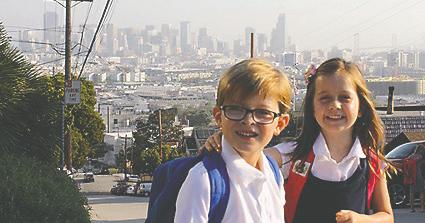
old. “I can only take the place with the name and menu intact. Nothing is gonna change basically,” though improvements might be made — lighting, a new floor, and new televisions — and the tapas menu could expand. Yalcin may also add brunch to the restaurant, which currently opens after 5 p.m. for dinner and drinks.
This month the San Francisco Art Institute (SFAI) launched its 3rd Street Studios Program, a professional studio residency. In its pilot year, 25 subsidized artist studios have been created in Dogpatch, home to the recently opened Minnesota Street Project and numerous art galleries. The program
includes a full-scale woodshop, digital media station and printing laboratory, and black-and-white darkroom. The individual, semi-private studios are from 150 to 300 square feet, priced below market. “SFAI is thrilled to contribute to addressing the imminent threat to the continued vibrancy of the Bay Area arts scene posed by the lack of affordable studio space,” said SFAI interim president Rachel Schreiber. “The studio residency program aligns with our mission to educate and promote artists, not only in our degree programs but in the entire community. Through offering the crucial resources of space, public exposure, and professional development opportunities, the residency program will provide a platform to sustain the viability of artists living and working in our City.” The pilot program runs through August 2017.
BY ERIN LOBACKI work in the East Bay. My coworkers who’ve fled over a bridge, through a tunnel, or down a freeway to raise their children frequently encourage me to move out of San Francisco. The schools in the suburbs are better, they say. The City is so inconvenient, they allege. There’s so little outdoor space, they complain. People claim they want to live in San Francisco for the restaurants and culture, but when you have kids, you don’t take advantage of those things, they say.
At first, I resisted the urge to retort; I didn’t want to be the smug City dweller. But over time I’ve realized that many of their misperceptions about living in San Francisco with kids are actually the reasons I’m happy my children are growing up in the City.
I’m delighted with my children’s school, which is walking distance from our home, challenges them academically, and teaches them to be good citizens in a diverse world.
You want convenience? Neighborhood gem Chiotras Grocery is on my block. If I run out of an ingredient mid-dinner-prep, I can get there and back, ingredient in hand, in less than two minutes; and yes, wearing pajama pants.
My kids enjoy ample time in a variety of outdoor spaces. We frequently visit our five neighborhood playgrounds, and tryout parks and playgrounds in other parts of the City.
My children like to hike and look for “specimens” in Glen Canyon. The Botanical Garden in Golden Gate Park – free for City dwellers! – is our favorite spot to explore.
My children frequently eat in “adult” restaurants and are, mostly, well-behaved. I’m proud of their willingness to explore new food, and relieved that I’m still dining out at the places I want to eat.
In the last several months, my kids have attended the Symphony, the theater, and several Giants’ games. They go to museums on school field trips. The San Francisco Opera has a program at their school. The City’s rich cultural offerings aren’t lost on its youth. I’m proud of the opportunities my children have as “City kids.” I hope San Francisco becomes a part of their identities.
Erin Loback is a 17-year resident of San Francisco, an Alameda County prosecutor, and a proud “PTA mom.” She lives in Potrero Hill with her first-grade twins, Brett and Maggie, and her husband Dan. “Why I Choose to Raise My Family in San Francisco” is the brainchild of the Potrero Residents Education Fund, a nonprofit committed to helping create a stronger, more vibrant San Francisco by ensuring that families from a diversity of income levels raise their children in the City. Submit your story to editor@potreroview.net.



What would life be like without partners? At Sutter Health’s St. Luke’s campus, our caregivers listen to you, like the specialists at St. Luke’s comprehensive Women and Children’s Center. Plus, we provide tools that connect you – like email messaging, online medical records, prescription refills and same-day appointments. And, whenever you need to visit, we’re nearby with eighteen physician offices and four CPMC hospital campuses, including St. Luke’s. Because local partners help make life a little easier.
cpmc.org/stlukes


1
h p://www.sfexaminer.com/supportershope-keep-second-sf-soda-tax-going-flat
2 If Berkeley shoppers don’t have
does it really exist? h p://www.mercurynews.com/columns/ ci_28170149/barnidge-if-berkeleyshoppers-dont-have-pay-soda
3 Grocery
p://bit.ly/AdelAlghazali
Thurgood Marshall, in Bayview, is the closest to the south; San Francisco International, which serves recent immigrants, is nearest to the west, at 1050 York Street.
Walton feels there’s a need for a middle school on the Hill, and believes the numbers will be there to support it. Walton is familiar with the community, having once worked with children up to 14 years old as director of the Economic Opportunity Council of San Francisco’s Potrero Hill Family Resource Center. He singled out Bayview and Mission Bay as areas where population growth is expected and building booms are already underway.
The Potrero Annex-Terrace housing complexes have produced high numbers of public school students, even compared to other public housing. In 2014, the developments averaged .78 students per unit, and have consistently sent about 450 students to SFUSD schools.
Bayview’s public schools are at their lowest enrollment in 20 years, matching citywide trends. San Francisco’s enrollment decline is related to a dearth of kindergarten-aged children entering the public school system between 2001 and 2008. The numbers have stabilized since then, but as that cohort makes its way through high school enrollments are expected to remain muted.
According to a SFUSD report commissioned last year, by 2020 the number of high school students will increase by from 2,000 to 3,000. The study, conducted by Berkeley-based Lapkoff and Gobalet Demographic Research,
also anticipates that the recent building boom will attract between 6,000 to 18,000 students over the next 25 years, depending on whether future homes are “affordable” and “below marketrate.” These types of units typically house more children. Wealthier San Francisco families tend to send their children to private schools; a quarter of the City’s students attend independent schools, a number that remained stable even during the past recession. Private school participation in San Francisco is well above the state average of nine percent.
The future of the ISA building, known as the Enola Maxwell Campus, is unknown. Blythe reported that the campus “has strong potential to house a school site in the future,” and that the SFUSD’s executive leadership team is analyzing options. That team was headed by Superintendent Richard Carranza, who recently resigned to head the Houston, Texas school system. Deputy Superintendent Myong Leigh is serving as interim while the school board searches for a replacement.
The SFUSD Department of Technology has occupied the first floor of the Enola Maxwell building for several years. The department, which oversees the integration of technology into classrooms, including training teachers and employees, expanded this year as the school system increased its computer science offerings. The Enrollment Placement Center is also using the site while its 555 Franklin Street offices are being renovated, a process that’s expected to be completed by the end of this year.
CRIME from front page
credit card terminal in the checkout lane hadn’t been updated with a chip reading device that’s designed to give consumers added protection against credit card fraud or digital theft.
No staff was available to answer questions at the customer service desk, though a bustle of activity could be seen in the employee-only room behind the desk when the door frequently swung open as personnel walked through it. According to the security guard, the Potrero Center Safeway doesn’t necessarily experience any more theft than other Safeway outlets in the City. He’d worked at various locations, and found that the issues are largely the same. The major difference is the amount of revenue stores make. The Safeway on Market and Dolores streets generates high revenues, and can justify employing a large staff. With numerous personnel roaming the aisles, there’s no need to have items locked up. In contrast, Potrero Hill’s Safeway brings in less revenue, with fewer staff, creating a need to prevent theft through other means. The reduced staffing also seems to result in longer waits for customers seeking products vulnerable to theft.
The Safeway employee working in tandem with the security guard offered that locking up products has caused a great deal of inconvenience for staff and customers, and slows down the flow of business. She mentioned that the cabinets containing alcoholic beverages are the only ones equipped with call buttons for assistance connected to the store’s intercom. Apparently, store staff asked that call buttons be added to other
cabinets a year ago, with no response. She recommended that customers let the clerk at the self-checkout section know if assistance was needed to access items upon entering the store. However, she acknowledged that customers don’t always foresee all the items they’ll need until they remember at checkout time.
The security guard explained that he only calls the police to intervene in crimes committed at the store if he’s instructed to do so by management. So far, the incidents he’s had to deal with are petty thefts that the police aren’t usually notified about. If the police are called, it’s often due to domestic disputes or disorderly conduct, but he emphasized that the store is generally safe and that patrons needn’t worry about their personal safety when shopping there.
Numerous media outlets have covered the continuing escalation of property crime in San Francisco, notably an April 24 New York Times article that cited data from the Federal Bureau of Investigation indicating that San Francisco has the highest property crime rate of the nation’s largest cities. Although a March 18 San Francisco Chronicle article blamed the statewide passage of Proposition 47 for the increase in property crime incidences, not everyone agrees with that assessment.
“Neither the data nor the changes Prop 47 made support the assertion that the initiative is responsible for an increase in auto burglaries or property crime,” stated Max Szabo, from the San Francisco District Attorney’s press office. “Prop 47 did not alter the
CRIME continues on page 6

crime of auto burglary, and the surge in auto burglaries began in July 2014, five months before Prop 47 was passed by the voters. Moreover, 47 was a statewide initiative, and property crime was actually down across the bridge in Oakland last year.”
Proposition 47 was passed by California voters in November 2014. It requires misdemeanor sentencing for petty theft, receiving stolen property and check fraud of $950 or less. It also sentences certain drug possession felonies as misdemeanors. The Pew Charitable Trusts examined crime statistics in 23 states that enacted similar legislation between 2001 and 2011 and concluded that, “Raising the felony theft threshold has no impact on overall property crime or larceny rates.”
Not all theft incidents are petty or non-violent. As reported by SF Bay News on July 29, a clerk working at a store in Dogpatch was injured by an alleged shoplifter who was armed with a knife.
In response to demand for personal hygiene and infant-related products, GLIDE Memorial Church Freedom Hall, at 330 Ellis Street, recently began free distribution of soap, toothbrushes and deodorant Mondays from 6 to 8 p.m., Tuesdays, Wednesdays and Fridays from 12:30 to 2:30 p.m. The San Francisco Department of Public Health’s Women, Infant, and Children program provides vouchers for infant formula and staple food items at several locations, including the WIC Clinic
housed at Zuckerberg San Francisco General Hospital at 2550 23rd Street, Building 9, Room 125.
Safeway corporate representatives wouldn’t respond to inquiries regarding theft-prevention policies. Potrero Center management declined to share an internal newsletter that addresses security issues at stores.
are growing. Office and commercial vacancies are very low. Business, hotel, property and other taxes revenues have increased,” she said.
Allersma said the City’s budgeting process has improved since passage of Measure A, the San Francisco Budget Reform Charter Amendment, in 2009. The ballot measure requires a two-year spending plan, a five-year financial strategy, and set deadlines for adoption of labor agreements. “Measure A really laid the groundwork to improve reserves and debt service policies,” said Allersma. In FY 2009, the City held $39.6 million in reserves; in FY 2015 it had reached $326.1 million.
“At the national level, we’ve been in a recovery since 2009, the longest economic expansion in over a century,” Allersma said. “Growth has begun to slow in some areas. The two-year budget reflects our assumption of continued moderate growth in the economy.”
According to Allersma, the City has had to cope with cost hikes. “Pension contributions and retiree health
costs have increased rapidly over the past ten years. We’re seeing inflation in construction costs too. There’s only a limited amount of equipment and labor. If everyone wants the same cranes and the same construction workers, the price for them goes up really fast,” said Allersma.
Allersma also pointed-out that over the past several years San Francisco voters have approved a number of ballot measures to increase funding for housing, transportation and children’s services without identifying new revenue sources to pay for these expenses.
According to U.S. Census Bureau estimates, San Francisco’s population increased by 7.4 percent between 2010 and 2015, from 805,000 to 865,000 residents. The City’s budget jumped by 35 percent over the same period. Allersma insisted that population growth, higher in-flows of workers and visitors, and greater numbers of older residents motivated the City to spend more on services. She said the City has been particularly pressed to add more public transportation capacity, address affordable housing and homelessness, maintain the City’s infrastructure, and increase park and library services. Allersma added that the City is engaged in a five-year public safety hiring process, employing more police officers and firefighters.
Allersma said it’s difficult to determine where the City should make budget cuts. Governmental accounting rules require that certain revenue sources be dedicated to particular purposes. Fees charged utility and airport customers must be deployed to support
associated services. “Under the City’s Charter, the only person who can grow the size of the budget is the Mayor. The Supervisors and agencies examining the budget can move things around, as long as the total amount appropriated does not increase,” said Allersma.
Allersma said it’s impossible to plan capital work to coincide with downturns, when construction and other prices might fall, because such declines are unpredictable. The City does reduce capital spending to preserve direct services in down years and funds discretionary projects in up years.
The City engages in a 10-year capital planning process that involves the Mayor, Board of Supervisors, Controller, and municipal departments, considering factors such as seismic needs, health, safety, and legal requirements. Some capital improvements are discretionary; others are not. The latter included renovation of Zuckerberg San Francisco General Hospital; all California hospitals have had to be rebuilt to meet state seismic requirements.
Municipal expenditures can be influenced by federal action. In 2007, the City launched Healthy San Francisco (HSF), an affordable healthcare program. The federal Affordable Care Act (ACA) was adopted in 2010, with legislative provisions implemented in stages until 2015. According to Alice Kurniadi, manager of the Office of Managed Care of the San Francisco Health Network, DPH’s delivery sys-
BUDGET continues page 8

With 25 local measures, 17 state initiatives, and many, many candidates, voters need a decision framework, or guiding philosophy, to render thoughtful ballot decisions. One approach is to group measures into like categories, and apply a consistent thought process throughout, deviating only when there’s compelling reasons to do so. Here’s ours, limited to local measures and the State Senate race.
Spend! In Equality and Efficiency, the Big Tradeoff, Robert Okun described unavoidable government inefficiency as a leaking pail. “The money must be carried from the rich to the poor in a leaky bucket,” he wrote. “Some of it will simply disappear in transit, so the poor will not receive all the money that is taken from the rich.” Some amount of taxpayer funds will be sloshed out of the bucket, in the form of unproductive civil servants, misdirected contract funds, and programs that’re no longer needed or ineffective. However, the City and County of San Francisco, which spends upwards of $10 billion annually, more than Costa Rica’s or Iceland’s national budgets, appears to have a bottomless bucket. There’s no indication that the Mayor or Board of Supervisors invests much time identifying programs or bureaucrats that’re no longer needed or not working well. As a result, no one knows whether new services could be paid for by downsized unnecessary existing ones. From this perspective, though the View has a soft spot for children, we’re cautious about endorsing any additional taxes
or expenditures, and strongly prefer that new taxes be offset by eliminating current ones.
Proposition A, $744.25 million school bond: The San Francisco Unified School District has a mixed record when it comes to supporting Southside schools. In response to a spirited effort by Potrero Hill parents, SFUSD agreed to keep Daniel Webster Elementary School open, and recently completed renovations to it, and Starr King’s, campuses. However, the District has so far refused to develop a kindergarten through eighth grade school in the area, and is dragging its feet on endorsing a new Mission Bay primary school. Still, we can’t say “no” to the children. YES.
Proposition B, $99 parcel tax, the proceeds of which would be directed to City College of San Francisco: CCSF is an essential rung in the educational ladder, offering programs for students not yet ready for or not provided by state colleges. However, management of CCSF is a legendary mess, one that doesn’t appear to be a fully cleaned up, as evidenced by the continuing existence of multiple campuses that’re expensive to maintain. Securing a two-year CCSF degree costs less than $14,000, with assistance available to low income students, a not unaffordable amount even if payments rise modestly. Of the 36,000 students who took credit course at CCSF last year almost half qualified for a fee waiver. NO.
Proposition K, .75 percent sales tax: Does the City need more money? The View doesn’t know, and neither does the
Mayor or Board of Supervisors. Do San Franciscans, particularly low income families, who are forced to spend their entire paycheck on essential goods, like food and rent, need an increase in their cost of living? NO.
Proposition V, tax on distributing sugar-sweetened beverages: Soda is a calorie wasteland, the overconsumption of which can lead to nasty health consequences, such as diabetes. However, since this is a tax on distribution, there’s no reason to believe it’ll be passed on to consumers in the form of higher beverage prices; more likely it’ll be spread across multiple products, like any other business expense, slightly raising our already high cost-of-living. Still, while adding a tax without subtracting a tax violates the View’s election philosophy, sugar’s harm is too big to ignore. YES.
Proposition W, real estate transfer tax on properties over $5 million: This is a solid tax idea, the very definition of bucketing money from the rich to the poor, which would raise upwards of $45 million. Unfortunately, there’s too much slosh in the City’s bucket; just because government can take money from taxpayers doesn’t mean it should. We hope that in the next election a more roundly respectful and balanced set of public finance measures are presented, including this one. NO.
Proposition RR, BART safety, reliability, and traffic relief: Would raise $3.5 billion, paid for by a $2.02 per $100,000 of assessed value ad volorem tax. For example, a home assessed – not
necessarily valued, the difference being Proposition 13 caps – at $1 million would pay $20.20 a year. There are indications that BART suffers from the same size leaks in its bucket as CCSF, including excessive overtime and overpaid managers. But BART is a critical transportation artery, and a key element in addressing housing affordability, by enabling San Francisco workers to live in the East Bay. Though we hope BART’s directors will take the necessary steps to improve efficiencies – or be voted out of office – in this case the View is willing to tolerate a significant amount of slop. YES.
Ballot Box Budgeting: State and local budgets are increasingly hogtied by laws that force expenditures to be made on specific programs: schools, health care, highways, parks, and the like. This kind of budgeting vastly reduces elected officials’ ability to shift expenditures to match new priorities, and plays to voters’ susceptibility to single-issue lobbies with an attractive cause, without much consideration of whether the amount of dedicated money is really needed. The View gets that it’s hard to trust politicians with our hard-earned tax dollars. But the proper way to deal with that is to elect trustworthy politicians, capable of making good compromises to support valuable programs.
Proposition E, street tree maintenance: This bad boy would set aside $18 million to take care of San Francisco’s trees, the responsibility for many of ELECTION
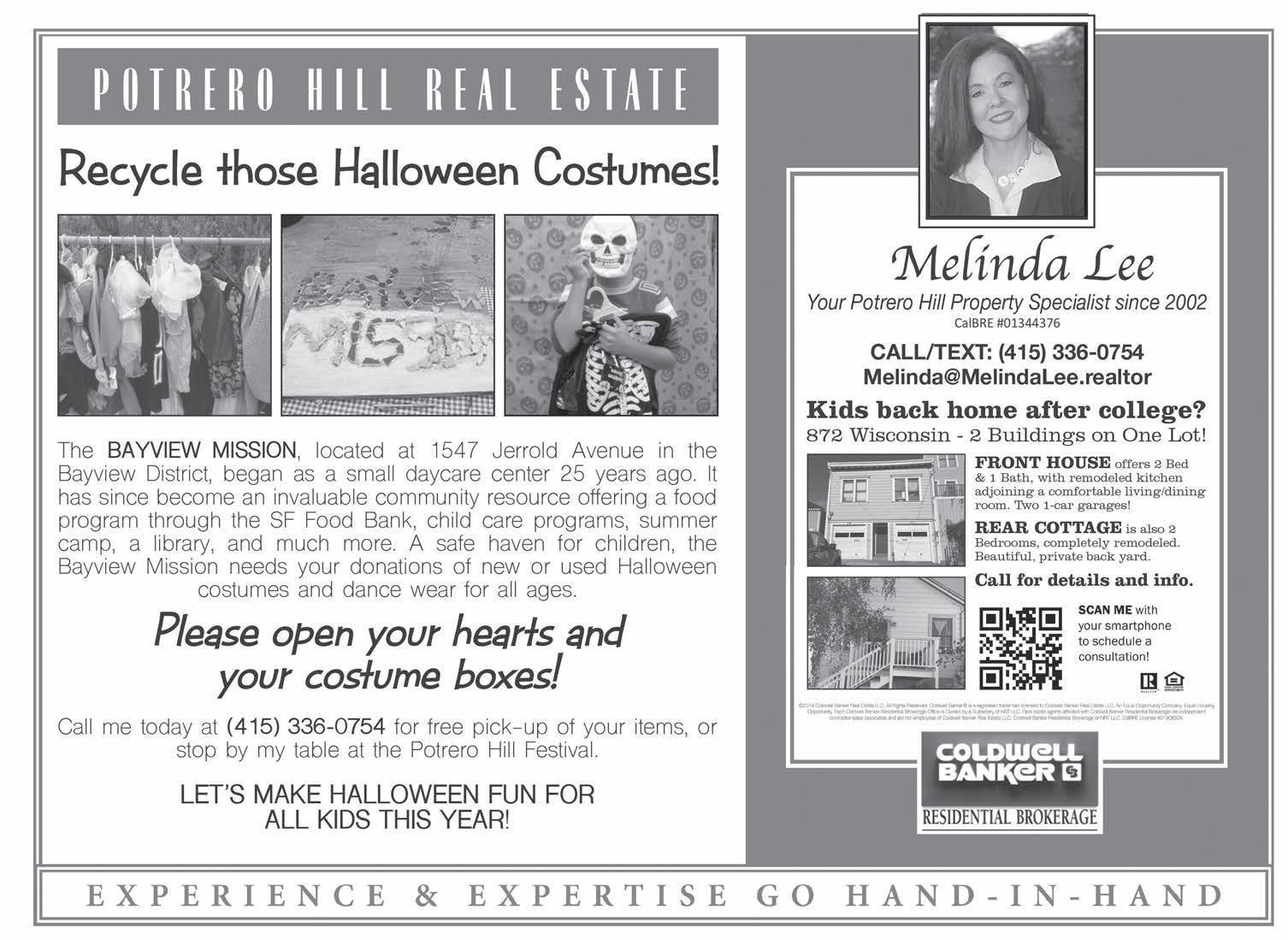
BUDGET
tem, after ACA took effect the number of HSF enrollees dropped from 60,000 to about 15,000 people. Rachael Kagan, DPH director of communications, said the decrease was caused by ACA-induced expansion of Medi-Cal and increased availability of private insurance.
Kagan said that the drop in HSF participants hasn’t triggered a similar reduction in the program’s budget. “HSF is now providing some subsidies, based on income, for individuals who cannot afford the premiums for insurance that they are eligible to purchase through the Covered California exchange. In addition, DPH is also a healthcare provider, with two hospitals, Zuckerberg San Francisco General Hospital and Trauma Center and Laguna Honda Hospital and Rehabilitation Center, and over 15 primary health care centers. Since we’ve added so many Medi-Cal patients, we now have more people getting care. This may actually make DPH’s costs higher,” said Kagan.
According to Kurniadi, some people covered by Healthy SF are homeless, but haven’t yet established City residency, or are undocumented immigrants who are ineligible for Medi-Cal. “We’re very committed to making sure that we are here as an option for people. We don’t imagine any changes or reductions in services. A lot of the structural costs remain because we want to maintain a good level of service for members,” said Kurniadi. The Department of Public Health’s FY
2016 budget is $24.9 million more than its FY 2015 allocation.
“Our budget will be about $267 million in fiscal year 2016-2017, up from $242 million in fiscal year 20152016,” said Sam Dodge, Department of Homelessness and Supportive Housing (DHSH) deputy director. “The rise in minimum wage for our workforce is one of the reasons our costs are increasing. We’re also expanding the amount of money for shelters, transitional housing, and drop-in services, from $39 million to $47 million. This includes the Navigation Centers at 25th Street and 12th Street. We’ve made a $7 million investment in supportive housing, which is up from $111 million last year to $118 million this year,” said Dodge.
Dodge said increased DHSH spending is the result of a new approach, in which the department wants to transform the lives of individuals who are homeless or vulnerable to losing housing. “The best approach for encampments is to lead with social services and help. We want to offer all kind of services people may need, whether it’s medical treatment, including mental health treatment, or shelter and housing,” said Dodge.
Not all of DHSH’s funding comes from the City. “We plan to add three new buildings for housing, and hopefully a fourth, all with federal grants. That should provide hundreds of additional housing units. The reason that this is happening is the federal government has really added a lot of competition to their annual grants for homeless services. We’ve been able to win those bonus programs. The federal government has also done a
huge push on veteran homelessness. With this effort, we hope to identify more veterans who are homeless and guide them to services and housing. The U.S. Department of Housing and Urban Development will be providing rental vouchers, and the Veteran’s Administration will be providing more social services,” said Dodge.
currently available for any public purpose, to services that support the arts and homeless families. Two great causes, no doubt, but readers know how the View feels about ballot box budgeting. NO.
Power Play! Lots of political jockeying is reflected in the ballot, principally between and within executive and legislative power. These types of measures mostly have to be evaluated on their own merits, under the general rubric of, if it’s broke, fix it. Otherwise, go get a beverage at one of Dogpatch’s homegrown wineries or breweries.
ELECTION from page 7
which has been placed on property owners. Of course the City should take care of its trees, an expense that ought to be reflected in the Mayor’s budget and approved by the Board of Supervisors. Why are voters involved in this? NO.
Proposition I, funding for seniors and adults with disabilities: A $38 million and growing budget set-aside for a specific, albeit sympathetic, demographic. NO.
Proposition S, allocation of hotel tax funds: The measure would dedicate a portion of the City’s hotel tax revenue,
Proposition D, special election for vacant supervisor seats: The View is sympathetic to this measure, which’d require that an exceptional election be held for a supervisor to replace one who left office before their term’s end. The current mayor hasn’t been successful at his replacement picks; neither of them won the seat once it was put to a vote. And the board is supposed to balance executive power, particular as elected at the district level. Still, it doesn’t seem worth the money for what at best might be a three-year stretch on the board. NO.
Proposition F, give 16 and 17 year-olds the right to vote: OMG! Have the proponents of this measure actually spent time with a Snapchatting, Instagramming teenager, who has to be reminded to make their own bed? Apparently not; otherwise they’d know that most of them aren’t ready to engage in
ELECTION continues page 9
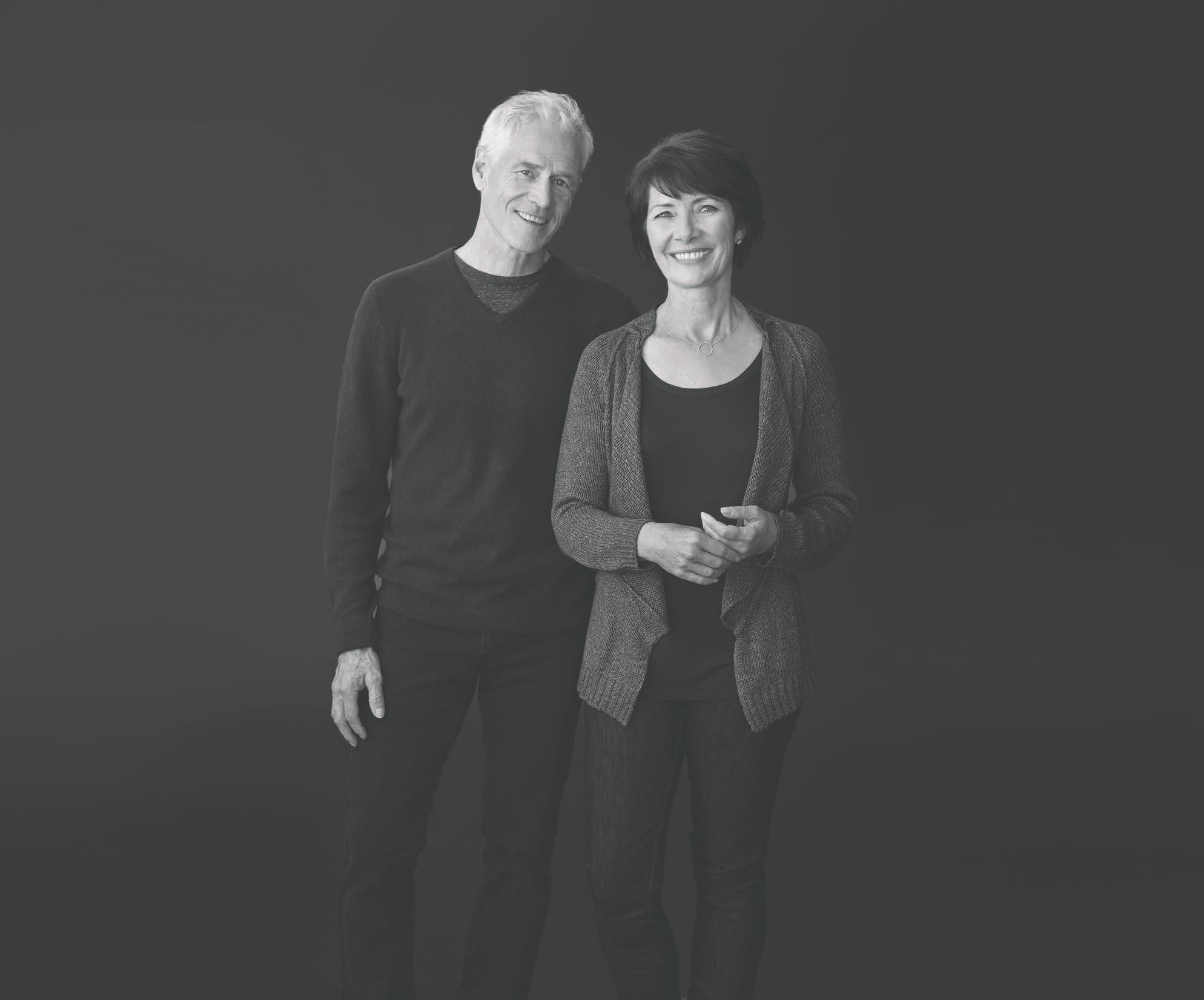

ELECTION from page 8
elections, no matter how spirited some might be. Scientific evidence suggests that brains don’t fully mature until individuals reach 25 years, an argument to maintain an elderly eye over any significant activities until then. NO.
Proposition G, police oversight: The measure would create a Department of Police Accountability, which would regularly audit how the San Francisco Police Department (SFPD) handles claims of officer misconduct and use of force. There’s plenty of evidence that the police need policing. YES.
Proposition H, public advocate: Does the City need another elected officer, whose responsibility would be to help ensure that the government runs smoothly? Isn’t that the job of the Mayor and Board of Supervisors, not to mention the Public Defender and District Attorney? It’s true that municipal governance seems to be at a low point, as evidenced by an out of control budget, wobbly criminal justice system, intractable homeless problem, and thoughtless land use policies, but it’d be much better if the existing political superstructure figured its way out of current conundrums, with the help of voters. NO.
Proposition L, lower the vote required to reject the San Francisco Municipal Transportation Agency’s budget to six supervisors: A majority vote on this challenging agency’s budget is quite reasonable. YES.
Proposition N, non-citizen voting in school board elections: On the one hand, it seems reasonable for parents with children educated by the San Francisco Unified School District to have a say in their school’s governance. On the other hand, voting is a fundamental right of citizens; who gets to be a citizen is a federal matter. On balance, the View tilts towards respecting citizens’ rights, though we could probably be convinced to go the other way. NO.
Proposition R, neighborhood crime unit: This proposed ordinance would require SFPD to assign no less than three percent of its sworn officers to a new Neighborhood Crime Unit, which would, um, specialize in addressing wrongdoings committed in neighborhoods. Aside from City Hall and financial corruption, which mostly fall to the Federal Bureau of Investigation or Security Exchange Commission, aren’t most of San Francisco’s crimes committed in its neighborhoods? This initiative smells like a kind of ballot box budgeting; better would be to hire an effective police chief and let them have at it. NO.
Proposition T, restricting gifts and campaign contributions from lobbyists: This proposal would require lobbyists to identify agencies they intend to influence before they contact them, and prohibit lobbyists from making gifts, including for travel, to City officers or their family members. Nonprofits would be allowed to provide gifts of food or refreshment up to $25 for attendees
at a public event. Lobbyists would be prohibited from making any contribution to a City elective officer, candidate, or candidate-controlled committee if the lobbyist was registered to lobby the agency for which the candidate is seeking election. Pretty much speaks for itself. YES.
Proposition X, preserving space for neighborhood arts, small businesses, and community services: This measure would require projects that want to convert or demolish space in the Mission and South-of-Market that’s presently being used by production, distribution, repair (PDR), or for institutional community purposes obtain a conditional use authorization from the Planning Commission prior to constructing new office space or housing on those sites. The projects would also have to provide new space to replace the PDR or community space that’s converted or demolished. It’s an attempt to tilt land use power towards PDR and nonprofit space, as opposed to housing and office uses. The View can see both sides of this measure, and doesn’t have a compelling rationale on which to make a decision. Our guess is that our readers have a gut reaction on how they’d like to pencil their ballot. VOTE
Housing: The most significant issue facing San Francisco may be housing. Housing costs are so high that no one other than a one percenter, those already secure in a rent-controlled apartment, or lucky enough to have purchased property before the end of the last recession can afford to live in the City. This, in turn, threatens the
future viability of schools, exacerbates already terrible commuter traffic and public transportation strains, seals-in the homeless crises, and portends San Francisco becoming a moated Disneyland for the rich. Will any ballot initiatives help address these cascading sets of problems? The answer is unfortunately “no.” Rather than ad hoc solutions, or untethered mayoral promises about creating 10,000 new affordable units, San Francisco needs a comprehensive housing plan with measurable milestones and elected officials who are accountable to achieving these targets.
Proposition C, $35 million a year affordable housing bond: This measure would enable existing bond funds, which in this case are repaid by private sector borrowers, to be directed to purchasing and improving affordable housing. It won’t trigger much in the way of additional costs, with the loans directed towards a worthwhile cause. YES.
Proposition J, tens of millions of dollars for the homeless and transportation: Yes, Mr. Mayor, who put this on the ballot, we want to take care of the homeless, and transportation is a priority. So deal with it in your budget by making the necessary accommodations with other spending priorities, and defend the results before the Board of Supervisors. NO.
Proposition M, housing and development commission: This measure would diminish the mayor’s power over affordable housing policies, and shift it to an appointed commission. While the
ELECTION continues page 10

ELECTION from page 9
View appreciates the need for greater transparency, frustration over the lack of which spawned this measure, the initiative is another example of a reaction rather than a comprehensive approach. It would also tilt authority away from an elected official to a body less susceptible to the will of the voters, and make government even more cumbersome. And it’s remarkable that San Francisco needs a charter amendment to require departments to create five year strategic and annual work plans. NO.
Proposition O, office development in Candlestick and Hunters Points: This measure isn’t about housing, but it’d impact land use, and doesn’t fit into any other category. So far it appears that many of Bayview residents’ fears about development at the Hunters Point Shipyard are coming true: growth
is divorced from the ever-struggling Third Street commercial corridor, and few economic benefits will redound to the community’s African-American population. From this perspective the View isn’t in the mood to do the developer, Lennar, any favors. In fact, we can hear Darth Vader music being played even as we say the word, “Lennar,” out loud. Go ahead, you try it. Still, this initiative is about making room for commercial development on the Points without crowding it out elsewhere in the City, which is reasonable. YES.
Proposition P, competitive bidding for affordable housing: Under this measure the City could only proceed with an affordable housing project on municipally-owned property if the Housing Office receives at least three proposals. It’d also make the current selection criteria part of City law. It’s an unnecessary and, by slowing or stopping the development of afford-
able housing, potentially pernicious proposal. Voters shouldn’t be involved in this level of administrative decisionmaking. NO.
Proposition Q, prohibiting tents on public sidewalks: No one likes the status quo, in which tent encampments, large and small, pop-up like mushrooms throughout the City, with municipal authorities irregularly responding by scattering their occupants, the process only to repeat itself. Camp, evict, repeat. Unfortunately, Proposition Q will just add to the problem. Under its most notable element a 24-hour notice would have to be given before removing a camp, along with a list of places to access housing and shelters, with no guarantees anything suitable will be available to the freshly dislocated. The View prefers that a tent ban be accompanied with clear, compassionate, and effective pathways for homeless inhabitants to garner appropriate housing, and associated
services, elsewhere. This measure does nothing to advance the latter; it’s unclear whether it’s even needed to pursue the former. NO.
Proposition U, affordable housing requirements for market-rate development: This measure would retroactively change affordability requirements on all below-market rate units citywide. It’d increase the already overwhelming demand for those units, and give property owners an incentive to evict or decline to rent to poorer residents in favor of those with higher incomes. NO.
State Senate, District 11: Both candidates have assets, but the View prefers Scott Weiner for his accessibility, consistency, and follow-through.
U.S. President: Hillary Clinton!
San Francisco Recreation and Park Department (RPD)’s fiscal year (FY) 2016 budget is approximately $208.8 million, a $30.1 million jump from FY 2015. According to Joey Kahn, RPD media relations and policy manager, the 14 percent expenditure rise reflects growth in operating costs. RPD’s budget includes more than $34.7 million in capital investments for playgrounds, parks, and facilities.
Kahn said that between 2014 and 2016 RPD added 7.73 acres of parks and greenspace to the 4,029 acres it already maintains. New acquisitions include Francisco Reservoir, 4.32 acres, 900 Innes, 2.4 acres, 17th and Folsom, 0.73 acres, and Noe Valley Town Square, 0.25. Two additional areas are in the process of being acquired, Schlage Lock, 1.94 acres, and 11th and Natoma streets, 0.45 acres.
RPD’s budget is $11.3 million less than FY 2009, when the City allotted
$220.1 million for the department.
The FY 2009 budget was an unusual peak spending year, in which the 2008 Clean & Safe Neighborhood Park Bond provided roughly $90 million more than previous budgets.
In a typical year RPD’s budget is funded from three primary sources, each of which is responsible for about a third of expenditures: the Park, Recreation, and Open Space Fund, a tax of two and a half cents for every $100 assessed valuation; the General Fund; and earned income, which reflects returns from park operations, services, and fees, the revenue from which is generally used to cover these activities.
In FY 2015, garages generated $8.7 million, program fees, $4.5 million, concessions and citywide facilities, $10.8 million, permits and facility rentals, $8.6 million, stadium rentals, $0.5 million, golf fees, $9 million, and the Marina yacht harbor, $4.5 million.
Total earned income increased between FY 2014 and FY 2015 by $2.5 million,

though stadium rentals fell by $6.1 million and golf fees by $0.7 million. Income from garages remained steady.
The Office of Community Investment and Infrastructure (OCII) develops and maintains parks in Mission Bay and the Hunters Point Shipyard. Mission Bay parks include Mission Bay Kids’ Park, roughly one acre, which opened in July; and Mariposa Park, about 2.4 acres, which opened in August. According to Marc Slutzkin, OCII project manager of Mission Bay North and South, parks in these areas are funded by assessments on property located in special tax districts and property taxes levied on development in Mission Bay and Hunters Point Shipyard.
Slutzkin said it may have seemed like there were postponements in opening the Mission Bay parks because equipment had been installed, but this wasn’t the case. “Once you roll the grass out, it may look like a park is ready to open. Yet the City needs to approve the work and go through the acceptance process. Mission Bay Kids’ Park opening was delayed as a result of a fire at an adjacent construction site. Before the park could open, the fire-damaged streets had to be repaired.”
The next Mission Bay park – Mariposa Bayfront Park, a two-acre site on Terry Francois Boulevard – is expected
to open in summer 2017. Mission Bay will eventually contain 49 acres of parks and open space.
The parks at the Hunters Point Shipyard are currently being planned or are under construction. David Satterfield, spokesperson for FivePoint Northern California – a recent spinoff of Lennar Corporation, the entity that formerly was developing the San Francisco Shipyard – the master developer of the former shipyard, said there are 25 acres set aside for parks in Hunters Point Phase 1 of construction, including pocket parks. FivePoint is close to completing Hilltop Park, and is renovating Innes Court Park. “The pocket parks are adjacent to buildings, so kids can go out and play and people can sit and have a cup of coffee,” said Satterfield.
Satterfield said FivePoint is breaking ground on Phase 2 of its project, which encompasses the remainder of Shipyard space as well as the area that was formerly Candlestick Park. The land spans about 700 acres, with 326 acres of parks and open space. Work has begun at Candlestick, but not on Shipyard Phase 2, because the U.S. Navy continues to remediate parcels located in that area. Once remediation is complete, the Navy will transfer the land to OCII.
PARK continues page 22

T he San Francisco Planning Department wants suggestions on infrastructure improvements to make in Dogpatch and the Central Waterfront. The effort is part of the Central Waterfront/Dogpatch Public Realm Plan, launched last year, which is being conducted neighborhood by neighborhood.
“A public realm plan is one phase of a much larger delivery arc,” explained City planner and project manager Robin Abad Ocubillo. “The job is to scope projects, develop cost estimates and get the program into the City’s capital implementation plan. Once the latter happens, we can start looking for funding. That funding will pay for civil engineering, landscape architecture; the nuts and bolts that make it happen. Without a public realm plan these streetscapes and parks don’t have a focused or streamlined way of getting into the capital implementation plan.”
For plan purposes, the Central Waterfront and Dogpatch are identified as Mariposa Street to the north, Islais Creek to the south and Pennsylvania Street to the west. Planners have examined improvements throughout that area, including such simple ideas as installing stop signs or marking crosswalks. The City has designated six neighborhood areas for more radical redesign, segmented into two categories: parks and street corridors.
The Planning Department has already received substantial public input related to Esprit Park, Tunnel Top Park and Warm Water Cove, which is located at the end of 24th Street. “What is really special about Warm Water Cove is it is really the only place in Dogpatch where you can get out to the Bay shoreline,” said Ocubillo.
There has been universal support for creating a natural landscape at Warm Water Cove, as opposed to paved walkways and sculpted gardens, particularly at the 24th Street entrance. “The natural aesthetic of the space is something we want to maintain and also to augment,” said Ocubillo. “We want to choose plant species that are native and adaptive to our climate so that over time, after becoming established, the park will sustain itself.”
Additional suggestions for the area of the park that wraps around to the south have included developing a skate park, a meadow and an adult fitness area, the layouts of which are under discussion. Planners want the space to be well lit at night, and to create a safer entry feel, including installing a sidewalk and additional plantings. “There is a really big missed opportunity as to how you approach and enter,” said Ocubillo.
Suggestions related to Esprit Park have similarly emphasized maintaining a natural feel, as well as adding a community garden, play areas and dog run. According to Frank Kingman of Friends of Esprit Park, a major issue that needs to be resolved is a longstand-
ing conflict between dog owners and other users. “It has become a de-facto dog park, and a lot of children are reluctant to come to the park because of the dogs there,” he said.
Opinions among dog owners are split as to whether an off-leash area should be created. Kingman wonders if such divisions, like those in Duboce Park, are possible in the smaller Esprit.
He cited irrigation as another issue to be resolved, as well as a reforestation plan to replace trees that are in poor health. “There are a lot of dead redwoods on the west side of the park,” he said.
Similar suggestions – community garden, play area, dog run – are being discussed for Tunnel Top Park, where City planners are principally serving as facilitators, providing professional designers to support work by nearby residents. The park, at the top of a Caltrain Tunnel at 25th and Pennsylvania Streets, was erected just last year by those living nearby, paid for through fundraising efforts. “It was created by the heart and soul of community members and residents around the park,” said Ocubillo. “Less than a year ago it was a dumping ground.”
The focus of another major realm plan category - streets – has been on the northern and southern parts of Minnesota Street and 24th Street, from Minnesota to Warm Water Cove. According to Ocubillo, all three roads have different issues to resolve. Minnesota Street North features all-industrial blocks and all-residential blocks, bordering Esprit Park in the middle. In that sense it serves as a microcosm of Dogpatch. “If we can solve some of those problems on Minnesota Street North we know we have a template to solve other issues in the area,” explained Ocubillo.
Site lines and pedestrian safety are among problems being examined. Ocubillo explained that between 20th and 22nd streets there’s a drop in elevation, making it difficult for cars to see walkers.
In contrast, Minnesota Street South is predominantly industrial, with few sidewalks. Planners want to improve pedestrian safety without interfering with loading docks. The intersection at 24th Street was particularly singled-out by Ocubillo. “There are really bad pedestrian safety issues and also dysfunctional vehicular patterns at that site,” he said.
How to balance safety and industrial needs is also being studied on 24th Street. In addition, the corridor is being evaluated as part of the Green Connections Network, another Planning Department initiative that seeks to upgrade streets along designated routes to ensure safer and seamless bicycle and pedestrian travel. Under the plan, Warm Water Cove theoretically could be connected to Douglass and Clipper streets in Diamond Heights.
Also under the realm plan, the


With a slew of new residents and businesses settling into Dogpatch over the last few years, the neighborhood is steadily distancing itself from its reputation as primarily a home for production, distribution and repair industries. Addition of the latest inhabitants has increased demand for safe and pleasant public spaces, and prompted the creation of the Green Benefits District (GBD).
Initially advocated for by community members in 2012, the district was approved by voters three years later. A board of directors was established in December 2015; former District 3 Supervisor Julienne Christensen was hired as GBD’s first executive director this past June.
“What the state law allows is for residents, property owners, businesses to elect to assess a small amount of money additional to their city taxes, which the city then collects, and a nonprofit is formed to then administer that money on behalf of those property owners and businesses,” Christensen explained. “Businesses often approve these benefit districts because it helps their bottom line. The very, very clever people in Dogpatch and North Potrero did something unique and very different with that opportunity. They voted to create a benefit district based
around street greening, parks, street trees, sidewalk gardens, the creation of new parks, the expansion and maintenance of existing parks for the general benefit of the neighborhood.”
The GBD encompasses two noncontiguous bits of land, spanning from Mariposa Street to Cesar Chavez, Illinois to Interstate-280; and from 16th to 19th streets, including a few streets on either side of Highway 101.
Christensen, who helped create the Joe DiMaggio Playground in North Beach, and worked to increase wheelchair accessibility at Coit Tower, said her first priority is better management of existing green spaces. “It’s a challenge to create a public space, but the real challenge—and people overlook it, including those sometimes who create them—is who is going to take care of it in the long term. Any public space is only as good as that ongoing care,” she said.
To address that need, GBD hired two fulltime janitorial staff to clean and maintain existing streets and green spaces. In addition, according to Christensen, a host of projects are being planned to emulate such earlier community successes as the Fallen Bridge Mini-Park, located on Utah Street under Highway 101. Christensen said the district is noting makeovers done in other neighborhoods to potential imitate, such as development of a
Paid Political Advertisement
NOVEMBER 2016 VOTING GUIDE

Join the San Francisco Chamber of Commerce and your local business community in voting for a better San Francisco on November 8, 2016
VOTE YES
PROP A Funds public school repairs, new campuses & teacher housing
PROP E Protects street trees at no cost to property owners
PROP O Encourages needed development and brings jobs to the Bayview
PROP P Requires competition, lowering costs to build affordable housing
PROP Q A commonsense solution to sidewalk encampments
PROP R Dedicates police staffing to reduce neighborhood crime
PROP U Ensures middle-income families qualify for affordable housing
PROP 67 Encourages use of reusable shopping bags
VOTE NO
Props D, H, L and M are a political power grab. Join Mayors Feinstein, Jordan, Brown, Newsom and Lee!
PROP K Raising the sales tax hurts small businesses
PROP W Higher taxes that increase rent for residents & small businesses
PROP X Ballot box zoning makes our housing shortage worse
PROP 65 Save our reusable shopping bag laws
For the full Voting Guide, visit sfchamber.com/votingguide
Paid for by SF Forward sponsored by San Francisco Chamber of Commerce. Financial disclosures are available at sfethics.org
recreational area on Berry Street under I-280 in Mission Bay.
With an annual budget of roughly $536,000, GBD spent nearly $33,000 in its first year on “Jumpstart Programs,” in which it “pruned, cleaned and refreshed” such spots as Fallen Bridge Mini-Park, Progress Park and what’ll become The Potrero Gateway Loop, located on San Bruno Avenue between 17th and Mariposa streets, according to the district’s website.
Christensen hopes that the “jumpstart” of area parks is exactly that, a start. “The Gateway Loop in its final phases includes bicycle lanes, dog areas, gathering areas, plants. This improvement would not only soften the impact of the freeway as it slashes through the neighborhood, but it would also provide those green spaces that we need,” Christensen said. GBD is acting as the project’s fiscal sponsor, making donations to it tax-deductible, since the district has 501c3 status. Christensen said GBD is also helping with advocacy, planning and fundraising.
GBD is also focusing on Minnesota Grove, created by nearby residents and property owner Redmond Lyons about 12 years ago. “So, on Minnesota between 24th Street and 25th Street, there is a little forest that was created by neighbors,” Christensen explained. “We are looking to expand that. It is dead center to the area where Deborah and Andrew Rappaport have leased and purchased buildings to support the arts. So, we have the 1275 communal gallery that they’ve opened. They have also purchased a building up the street that is going to be divided into artist studios, and they are going to offer those at reduced rents to help support the arts community and keep them in San Francisco.”
Minnesota Grove expansion elements may include adding stadium seating adjacent to the 1275 Min -
nesota gallery and improvements to nearby sidewalks and intersections.
“I call South Dogpatch the ‘wild east.’ Minnesota is an “unaccepted” street, meaning the adjacent property owners, not the City, have primary responsibility for its upkeep. Except for the areas around some of the newer residential complexes, there are no sidewalks, curbs, gutters. Scant street lighting is road-focused, and there are no crosswalks,” Christensen said. She added that Minnesota between 23rd and 25th streets is a particularly “fraught” area, and that the GBD is “working with City staff to sort out the unusual details and try to make it workable and safe while retaining its quirky charm.”
GBD also wants to add greenery to 22nd Street between Pennsylvania and Illinois streets, and repurpose the old Third Street Police Station, potentially for use as a community center. “We are looking at the possibility of finding donors to help us convert that into a community space. We don’t have that here; place to take tai chi or water color classes…” Christensen said.
PLANNING from page 11
Planning Department is assisting in the 22nd Street Greening Plan. According to Susan Eslick, founder of the Dogpatch Neighborhood Association, the idea is to comprehensively re-do 22nd, with new trees, lighting, sidewalk repairs and benches from Pennsylvania to Third streets.
The public outreach process for the realm plan will wrap up at the end of 2016. Planners will then proceed to develop detailed designs.

Last month, the Dogpatch Neighborhood Association (DNA) voted to endorse the siting of a Navigation Center at the end of 25th Street, just beyond the MUNI Metro East Maintenance Facility. Two dozen DNA members voted in favor, six against, with three abstentions.
Before the vote several residents expressed concern about homeless behavior in the neighborhood, and wondered whether it was the right time for a Navigation Center to be sited in
1,897
756 27 Source:
Dogpatch given ongoing development pressures. Other community members thought the City had developed a solid implementation plan, and without an endorsement DNA’s ability to work collaboratively with municipal agencies on issues associated with the Center, as well as encampments, would be diminished.
“More importantly it will cast a positive light on future interaction between the neighborhood and the Center,” said Mc Allen, DNA board member-at-large. “If we can accept the residents of the Center as neighbors, we will be on stronger footing to support their efforts to improve their lives. Rejecting the proposal was unlikely to block the project, but it may have undermined our ability to meaningfully engage the Center as anything other than opponents”
The lopsided vote was the result of the City working closely with DNA to craft an agreement that involves numerous municipal entities, including the San Francisco Department of Homeless Housing, Police Department, Department of Public Works and the Port. The collaboration emerged after a rocky start, with the City unilaterally announcing that it was locating

the Center on 24th Street, just west of Warm Water Cove, a proposed site that generated significant controversy.
Under the DNA agreement, police will patrol specific neighborhood areas, including spots surrounding the Navigation Center and ongoing municipal response to encampments in










the community, with 72 hour response time, among other elements. The City committed to maintaining the center for three years.






















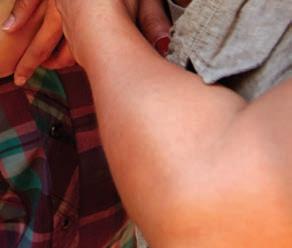

Warm Water Cove, tucked away at the end of 24th Street, just south of the defunct Potrero Power Plant, used to serve as a sewage outlet, according to FoundSF. Now it’s getting a makeover, which may ultimately lead to more comprehensive cosmetic surgery.
According to David Beaupre, San Francisco Port senior waterfront planner, his agency may soon install new lighting and site furnishings, such as benches and bicycle racks. “The Port has been considering and thinking about a modest level of improvements,” he said. “We’ve also begun to think about how to re-landscape some of the areas so that it requires less maintenance and more openness.” These inexpensive improvements will likely be implemented by the end of next year, but not before community outreach confirms neighborhood support for them.
In 2012, the Port developed Blue Greenway Design Guidelines, which identified the addition of a small craft launch, open air pavilion, mountain bike/BMX bike training area, skate -
COVE continues on page 24

“Comedy has to be based on truth. You take the truth, and you add a little curlicue at the end.”
~ Sid Caesar
So begins Circus Kid , Lorenzo Pisoni’s poignant documentary about his dad, Larry, and the Pickle Family Circus. The film includes lots of “little curlicues,” and they’re not all at the end.
The Pickle Family Circus was founded by Larry Pisoni and Lorenzo’s mother, Peggy Snider, in 1974. The family – including Snider’s daughter, Gypsy – lived at Carolina and 22nd streets; the circus rehearsed at The Church, at Missouri and 19th. The troupe was at the forefront of the New American Circus Movement, integrating theater into
A MONTHLY UPDATE
SPONSORED BY BRIDGE HOUSING
VOLUME 73 • OCTOBER 2016
Rebuild Potrero seeks additional project funding
BRIDGE Housing is assisting the San Francisco Housing Authority to prepare two important applications to the U.S. Department of Housing and Urban Development (HUD) for Potrero HOPE SF, 1) a Section 18 Demolition and Disposition application and 2) a request for Rental Assistance Demonstration (RAD) Program funding.
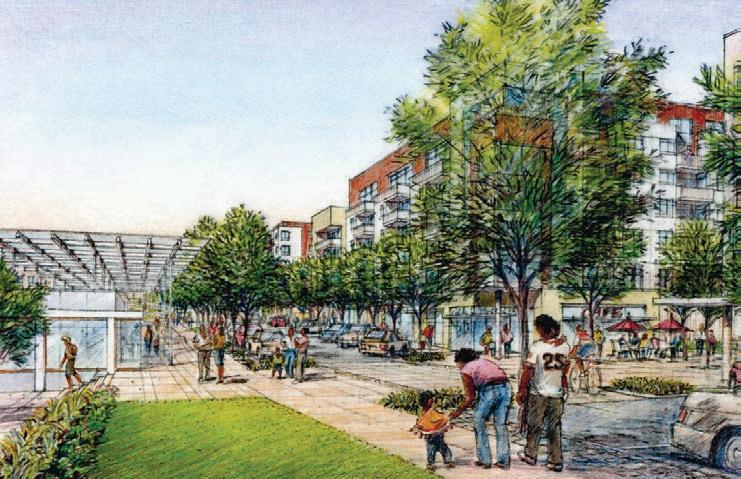
The Section 18 application requests approval and funding to:
▶︎ Demolish existing units and streets in phases and build the Potrero HOPE SF community-based Master Plan,
▶︎ Convey authority to BRIDGE Housing to develop new affordable housing, open spaces, and community center site,
▶︎ Transfer Potrero land to the City for the new streets, sidewalks and utilities, and
▶︎ Sell parcels to developers in order to develop the market rate sites. Sale proceeds are an integral part of the overall financing for the rebuilding effort and will be used to support the construction of new infrastructure, open space and affordable housing.
The RAD application will provide rental subsidy that will support HOPE SF’s commitment to keep rents affordable to existing public housing residents. In addition, it will allow the project to leverage other financing that would not be possible without participation in the RAD program.
BRIDGE Housing held several resident meetings with public housing tenants to announce these funding opportunities and to solicit questions and comments for the applications. The Housing Authority will submit both applications by the end of September.
If you have any questions about these applications, please contact Daniel Adams, Director, Real Estate Development, Potrero Hill at 415-321-3566 or dadams@bridgehousing.com
For more information: website: rebuildpotrero.com, e-mail potrero@bridgehousing.com
circus arts, paving the way for Cirque Du Soleil and other groundbreaking companies. The innovative company had a progressive political ideology, participating in farmworker activism and second wave feminism events.
A few years ago, Lorenzo toured with Humor Abuse , a one-man play created with Erica Schmidt. Presented by the American Conservatory Theater in 2012, the dramedy tells the story of an unconventional father-son relationship. After Lorenzo, at age two, marched into the circus ring during intermission with a fully realized silent clown act, his life in the family business began. At age six, Lorenzo was asked to sign a contract, rendering Larry not only Lorenzo’s father but also his coach, director, and clown partner.
Circus Kid, originally sporting the title Humor Abuse, expands and deepens that complicated story. The 69-minute film, which was largely financed through a Kickstarter campaign, documents the “spirit, the lunacy, the daring, the danger and the dynamics of growing up in a circus family.” As Lorenzo as voice-over narrator explains, “Most kids dream about running away from home to join the circus, but for me the circus was my home. I had to join.”
Lorenzo’s given name is that of his father’s clown character. When Lorenzo rehearsed, Larry continually admon-

ished him to “do it again!” Hence the name of the film’s production company, “Do It Again Productions”. The film doesn’t shy away from the dark side of the circus family’s dynamics, and its ultimate demise, including a passing reference to an intervention into Larry’s drinking at Bloom’s Bar.
Sarah Devorkin has expertly edited a wealth of archival material, including amazing vintage footage, color and black-and-white stills, and a 1987 audio interview with Larry. Interspersed are humorous and heart-
CIRCUS continues on page 31
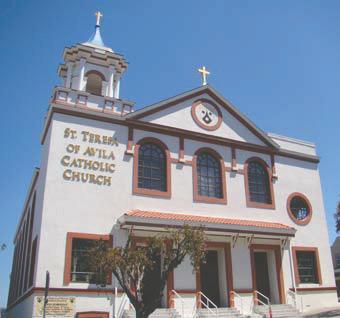

 BY JACOB BOURNE
BY JACOB BOURNE
The Pasha Group, based in San Rafael, is a family-owned global logistics company that focuses on automotive and maritime trade and goods movement. The company was launched in the 1940s by George W. Pasha, Jr., when he bought a gasoline station at Van Ness Avenue and Bay Street near Fort Mason. Over the decades the company
grew and diversified, now consisting of automotive service branches, distribution centers and office locations on three continents, including ports in San Diego, Los Angeles and Oakland.
The Pasha Group’s newest location, at Pier 80, opened in August, when 500 automobiles and 30 boats were unloaded off the company’s ship, Jean Anne, before being transported to Northern California dealerships via
truck. “A presence in the Bay Area supports our overall strategy to offer our clients a network of locations to support their supply chains,” offered Maureen Pasha Larson, general manager, Pier 80 Pasha Automotive Services facility. “Our commitment to our people and service has afforded us many expansion opportunities thanks to loyal customers who depend on us to keep their products moving to destination. Having a physical operation in San Francisco broadens our connection with a community that has given so much to our family. We are very excited to welcome new associates into the family business. As for new locations, we are always looking at strategic locations nationwide to grow our network.”
The inaugural shipment signaled the beginning of a 15-year lease, with two five-year extensions, between the Port of San Francisco and Pasha Automotive Services, a subsidiary of The Pasha Group. Pasha will use the 69acre cargo terminal, which is adjacent to Cesar Chavez Street, to import and
PASHA continues on page 16
Xan DeVoss began working as a professional baker in 2011, relying on a small shared space with an oven, selling bread through a subscription service. The fledgling business increased production, vending loaves to local retailers like Cafe St Jorge on Mission Street, Cove in Lower Haight, and Folsom Street’s Rainbow Grocery Cooperative. Though DeVoss found a larger rental baking space to accommodate growth, she realized that the business wasn’t generating any profits.
She joined the Bayview Underground Food Scene, a collaborative that builds community through food and beverage events, such as popup markets. Beginning in 2013 she spent Thursday evenings meeting food enthusiasts and selling loaves directly to customers at the 4634 Third Street market, continuing her engagement with the marketplace when it moved to Pier 70. Through the collaborative she met Barbara Gratta, owner of Gratta Wines; together the pair leased a retail space they named “Butchertown Gourmet,” at 5273 Third Street.
“We run completely separate businesses but share a space that has a marketplace feel,” explained DeVoss. “Butchertown Gourmet serves as a community space that was inspired by The Market at the Twitter building.”
Fox and Lion Bread Company launched in Bayview in June 2015. Starting with breakfast and lunch service, the eatery has been expanding incrementally, adding menu options and longer hours. It typically opens at 8 a.m., serving coffee, espresso, and pastries made in-house, including cinnamon rolls, for which DeVoss has received rave reviews. There’s a daily specialty bread offering, such as the popular four-grain sourdough, available Tuesdays. On Fridays patrons can order pizza by the slice most of the day, with full pies on the evening menu, complemented with a locallybrewed beer selection. Bagels are the specialty on Saturdays. Lunchtime all week long has a selection of soups, salads and specialty sandwiches, many named after neighborhood gourmands.
“I focus on quality, and am really interested in making top quality ingredients to accommodate a wide variety of clientele,” said DeVoss. “I offer competitive deals and options to customize menu items. Our signature loaf is definitely the Four-Grain Levain; it’s a sourdough made using a natural starter that’s just the right size to suit urbanites. The neighborhood demographics are changing so rapidly, but right now my biggest competition is McDonalds.”
One menu offering, “Mike’s Spe -
The Bayview and Hunters Point neighborhoods continue to evolve, with recent demographic changes influenced by economic trends, particularly related to real estate. According to the Community Youth Center of San Francisco, a lifetime ago Bayview-Hunters Point’s economy was largely reliant on the Hunters Point Naval Shipyard, built during World War II, which dislocated a once thriving Chinese-American shrimping industry. Dockyard jobs drew African-Americans to settle in the area.
The Shipyard closed in 1974, prompting a severe economic downturn. The next 20 years was marked by a dramatic increase in unemployment and poverty in the neighborhood. In 1989, according to Greenaction for Health and Environmental Justice, the shipyard was designated a Superfund site, one of the then 150 contaminated areas in and around Bayview.
cial,” was named after longstanding customer, Mike Yoshioka, a lover of the sandwich’s goat cheese, who’s program director for City of Dreams. The organization educates and mentors youth living in low-income housing communities. Yoshioka first met DeVoss at the Bayview Underground Food Scene popup markets at Third Street and Pier 70, and continues to buy lunch at Butchertown Gourmet. For one City of Dreams program, Yoshioka takes a group of youth on Saturday excursions, such as mountain biking trips to China Camp State Park. Stopping by Fox and Lion Bread the morning of the trips has become a tradition for the group, who pre-order their favorite sandwiches and descend upon the bakery to chat with DeVoss and pick-up the meals.
“All the kids know Xan, she’s like part of the family,” offered Yoshioka. “It’s a very youth-friendly environment. Visiting regularly has been really good for the kids in terms of their growth. Xan is a really supportive adult in their lives and they love the experience.” City of Dreams staff and youth participants also provide produce to the bakery from harvests gleaned at the Oakdale Community Center and Farm, located at 1030 Oakdale Avenue.
BREAD continues on page 16
During the 1990s and early-2000s, housing prices escalated throughout San Francisco, including in BayviewHunters Point. Many longtime residents cashed out of their property, and left for other Bay Area counties, particularly the East Bay. In 2007, the Third Street Light Rail began operations, increasing connectivity between Southside and the rest of the City.
Change swept through BayviewHunters Point again during the nation’s subprime mortgage crisis. Between 2007 and 2009, the housing bubble popped, leading to dramatic real estate devaluation. An analysis of 2009 to 2010 District 10 median home prices by JacksonFuller Realtors indicated that San Francisco’s Southside neighborhoods experienced some of the worst impacts of predatory lending, with high foreclosure rates. In 2010, the median sale price for homes in Bayview was $360,000; $110,000 for Hunters Point.
By 2011 the real estate market had rebounded. According to a report released by San Francisco-based Paragon Real Estate Group, between 2010 and 2014 Bayview experienced a 75 percent home value appreciation, the highest of any City neighborhood. Paragon’s 2015-2016 estimates show Bayview’s median home value at $667,500, and condominium prices at $732,500. The median condo price in Hunters Point is $565,000.
The real estate whipsaw resulted in new demographic patterns. According to the U.S. Census Bureau, in 2010 the population of the 94124 zip code, which encompasses Bayview and Hunters Point, was 33,996. African-
Bayview residents living near an alleged illegal automobile repair business on 1515 Shafter Avenue have told City officials that Mark Phillips, the operator of the business, has prompted one woman to become so fearful she refuses to leave her home. According to the residents, the alleged activities wouldn’t be allowed to continue in wealthier neighborhoods, such Potrero Hill’s north slope.
“Will some lawyer please help this senior citizen, who is definitely suffering abuse?” Bayview resident Warren Foster said, referring to the fearful woman, who preferred to remain anonymous. “She is a prisoner in her house.”
According to the residents, Phillips has acted in threatening ways, including leaving a running vehicle outside the scared woman’s home, which caused her carbon monoxide alarm to sound. Residents have also complained of vehicles double or triple parked in the street, and cars under repair.
“This is not acceptable,” Foster said. The fearful woman, Foster and several other residents met with police and Office of Citizen Complaints (OCC) officials, who told them nothing could be done, the residents said. However, Pamela Thompson, executive assistant to OCC’s executive director, denied that a meeting took place.
According to Deputy City Attorney Nick Colla, a task force made up of several City departments cited the property owner for building and health violations that may be linked to an auto repair business, but the situation is complicated because the property owner is renting to her daughter, who is married to Phillips.
Attempts to get in touch with Phillips were unsuccessful.
PASHA from page 15
export vehicles. The tenancy agreement was approved unanimously by the Port of San Francisco Commission, a five-member, mayor-appointed board consisting of president Willie Adams, vice president Kimberly Brandon, and commissioners Leslie Katz, Doreen Woo Ho, and Eleni Kounalakis.
Pasha Larson foresees that Pier 80 will continue thriving as a maritime port long after her company’s lease expires. “It is critical to preserve the little maritime real estate that remains in California; so much has been developed for commercial and recreational use,” she said. “Marine terminals are economic engines that bring family sustaining wages to urban areas and promote business far from the piers where cargo is processed. Pier 80 is well positioned to handle a wide variety of commodities based on its location and available infrastructure, and will remain a valuable resource for the community for decades to come.”
As part of its lease agreement Pasha will enhance the Port’s infrastructure, and work with the Office of Economic and Workforce Development to train and hire workers from adjacent neighborhoods, including Bayview. The company expects to employ 50 longshoremen, and create an additional 150 jobs as operations intensify. CityBuild, an OEWD program, offers an 18-week pre-apprenticeship training program for 26 different trade professions, and will focus on recruiting workers from District 10 for employment with Pasha.
“After working the details for a successful business plan over the last two years with a remarkably talented cadre of maritime champions, including Monique Moyer, Elaine Forbes and Peter Dailey, we are extremely optimistic about our partnership with the Port of San Francisco,” said John Pasha, senior vice president, Pasha Automotive Services. “We are able to bring our experience and expertise in automotive services to create new jobs, serve existing and new customers, reinvigorate an underutilized asset, and bring a long-term, viable maritime use of Pier 80.”
Prior to the arrival of Pasha Automotive Services, the largely underutilized Pier 80 served as a temporary homeless shelter. The lodging, a joint initiative between the Port Commission and the Human Services Agency, provided shelter services dur-
 BY YOUNG JEAN LEE
DIRECTED BY MINA MORITA AND LISA MARIE ROLLINS
BY YOUNG JEAN LEE
DIRECTED BY MINA MORITA AND LISA MARIE ROLLINS
ing El Niño winter storms, though the opening also coincided with Super Bowl 50 events in the City, in which many homeless people were purportedly relocated from tourist areas by officials. The provisional facility had consisted of a large tent with about 180 sleeping mats and basic amenities, such as restroom facilities, storage and a basketball court. It operated from February to July.
An estimated 96 ships are expected to arrive at the port yearly, bearing vehicles imported from Mexico, Asia and Europe. After being unloaded, the facility will clean and detail the automobiles, and in some cases provide factory services, such as installing components, before delivering them to dealerships. According to Pasha Larson, the company is marketing to all car manufacturers. Export of vehicles to Pacific Rim countries is also a possibility.
“This agreement supports many of the goals of the Port’s strategic plan,” said Elaine Forbes, Port of San Francisco, interim executive director. “It promotes our maritime industries; increases the volume of cargo shipping; improves and efficiently manages Port property; increases revenue, and most importantly, creates jobs and job training opportunities. We are looking forward to the long-term partnership.”
According to John Pasha, U.S. automotive sales soared to a record high of 17.5 million vehicles purchased in 2015. Though he expects the upward trend to continue, industry experts generally anticipate lower future auto sales. Pier 80 is strategically located to meet demand, and to supply vehicles for the Northern California market. Pasha hopes that the transportation hub will reduce emissions resulting from trucks hauling merchandise hundreds of miles north from Los Angeles.
“We are not increasing sales of autos locally, but will be delivering autos by water that otherwise travel to the Bay Area on freeways from several hundred miles away today. Our location in San Diego, as an example, handles tens of thousands of autos destined for the Bay Area today. We anticipate reducing truck miles substantially by offering a port terminal so close to a large auto market,” explained Pasha Larson.
Recent research done by CBRE Group Inc., a global commercial real estate services company, indicates that demand for prime logistics spaces in
global trade hubs has increased as the e-commerce market grows and sites suitable for development of logistics hubs remains limited. Increase in demand for spaces similar to Pier 80 has resulted in a rise in rents of these industrial locations by 2.8 percent globally and 5.6 percent for U.S. coastal hubs. Of the global logistics hubs researched, Oakland’s industrial spaces showed the fastest growth in 2015, with a 29.8 percent increase in rents.
BREAD from page 15
DeVoss recently added lunch service on Mondays from 10 a.m. to 3 p.m. and stays open later into the evening the rest of the week, excluding Saturdays, closing at 2 p.m. and Sundays, the only day the bakery takes a rest. Though initially working with a single employee, the extension in hours accompanied the hiring of three additional staff.
DeVoss attributes much of her success to the hard work and dedication of her employees. She described her staff as young people who really care about the business, and who strive to establish a welcoming place where people can congregate and know each other by name.
According to DeVoss, word of mouth has been a major driver in attracting new customers. She’s also incorporated such marketing strategies as postal mailings, social media, Yelp and Google advertisements. Bread subscriptions are still available, with pick-up locations at Cove and Cafe St Jorge. Being visible in the community is a key promotional plan, including attending events such as Taste of Potrero.
“Running a successful bakery in San Francisco takes a lot of dedication. A lot of purveyors and tradesmen come in and give ideas about how to run a profitable business, but what works for me is that I’m not just fueled by making a profit. I don’t inflate prices. I’ve been able to keep prices reasonable while not cutting corners on quality. I have been able to do well financially with this method because customers trust me. People really appreciate quality at a reasonable price,” said DeVoss.
Customers can expect to spend between $2 and $5 for whole loaves,
BREAD continues on page 17
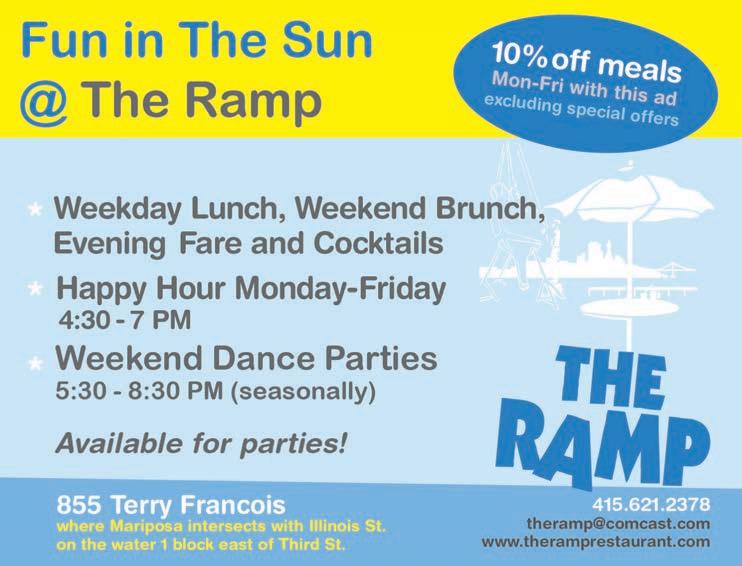
such as the Sweet Batard, and $5 to $8.75 for sandwiches, soups and salads. The current special is Avocado Toast, for $4.
BAYVIEW from page 15
Americans represented 33.7 percent of the population, Asian-American 30.7 percent, Latinos 24.9 percent, Whites 12.1 percent, and American Indians 0.7 percent.
In 2010, the San Francisco Planning Commission adopted the Bayview-Hunters Point Plan Area, with a goal “To arrest the demographic decline of the local population, particularly African-Americans, and improve its economic position by giving greater priority to job and business growth than to housing growth…To harmonize different land uses, particularly elimination of conflict between housing and industry, elimination of truck traffic through residential and neighborhood commercial areas, and reduction of health and environmental hazards caused by wastewater discharge and industrial by-products.”
By 2014 94124’s population had grown to 35,201, an increase of 1,205 people. The number of African-Americans had diminished somewhat, to 33.2 percent, the amount of Asian-American residents increased to 32.9 percent, Latinos declined to 21.7 percent, Whites jumped to 16.2 percent, with American Indians at 0.8 percent. The median age in the neighborhoods dropped slightly, from 34.6 in 2010 to 34.4 in 2014. In that
same year 73.2 percent of adults had at least a high school diploma, with a median household income of $49,594, with 23.5 percent of individuals living below the poverty line.
Three major development projects are underway in the neighborhood. Build Inc. is planning a mixed-use “village” at 700 Innes Avenue, with 1,240 homes; 150 to 200 will be “affordable.” Construction is expected to be completed by the spring of 2018. Lennar Corporation is building another mixed-use community in the former Hunters Point Shipyard, spanning 750 acres, named The San Francisco Shipyard. About 371 condominiums of the project’s 12,000 housing units have been built.
Further south, at Candlestick Point, the area where the former 49ers stadium once stood is being redeveloped by Lennar as a performance arts venue, 6,225 residential units and a hotel. According to the Office of the Mayor, The San Francisco Shipyard and Candlestick Point are the largest redevelopment projects in the City since the 1906 earthquake, and are expected to cost a combined $8 billion.
On August 4 an agreement between the San Francisco Public Utilities Commission and labor unions represented by the San Francisco Building and Trades Council was signed for the Sewer System Improvement Program, a multi-billion dollar capital investment to upgrade the sewer system to increase reliability and meet seismic standards. The 15-year long construction project will create thousands of blue collar jobs. Since upwards of ninety percent of San Francisco’s sewage is processed
in Bayview, there’ll be a focus on hiring from the neighborhood. Young Community Developers Inc. will provide job training and certification in construction fields.
The San Francisco Climate and Health Profile, published by the San Francisco Department of Public Health (DPH), ranks neighborhoods on a scale of one through five in terms of resiliency to climate change; one being the least resilient and five the most. Bayview-Hunters Point scored “one” for risk of floods, landslides and heat vulnerability. Twenty-seven percent of the area is at risk for environmental contamination; for example, predicted sea-level rise and increased storm activity could negatively impact sewage systems, waste and drinking water. The neighborhood ranked 35 out of 36 in terms of overall climate change resiliency.
For much of the past 24 years Dawud Dirbas has worked as a clerk at the Kennedy Market on Third Street where he has witnessed nearby robberies and fights almost weekly, and could hear shootings frequently. His brother, who owns the store, started the business in 1992, selling groceries, sandwiches and other items. Dirbas said the neighborhood has changed a great deal recently, with many former residents moving to Treasure Island and Sacramento. These days crime has slowed, he said; he only hears about a shooting every few months.
“Our business is not doing good,” he said. “We have lost a lot of customers and the new residents don’t shop at stores in the neighborhood. I don’t know if business will pick-up, but we
will try to alter the products to serve more specialty items, healthy organic food, fruit, sandwiches and coffee.”
Data for DPH’s San Francisco Indicator Project show that between 2010 and 2012 there were 3,596 violent crime incidents in Bayview-Hunters Point, a rate of 105.8 offenses per 1,000 people. According to a 2011 report by Harder & Company Community Research, 54 percent of area residents reported feeling “very safe” in their neighborhood during the day, compared to 84 percent for the whole City.
The San Francisco Police Department didn’t respond to requests for more recent crime trend data. The Bayview Police Station publishes a weekly newsletter, which includes incident descriptions, and a weekly tally for 2016. Last July, there were 156 reported incidents of robbery, burglary, automobile boosts, and stolen vehicles in District 10, which also covers Potrero Hill, Dogpatch, and part of the Portola. In July of 2015 there were 192 similar incidents; in July 2006 the total was 262.
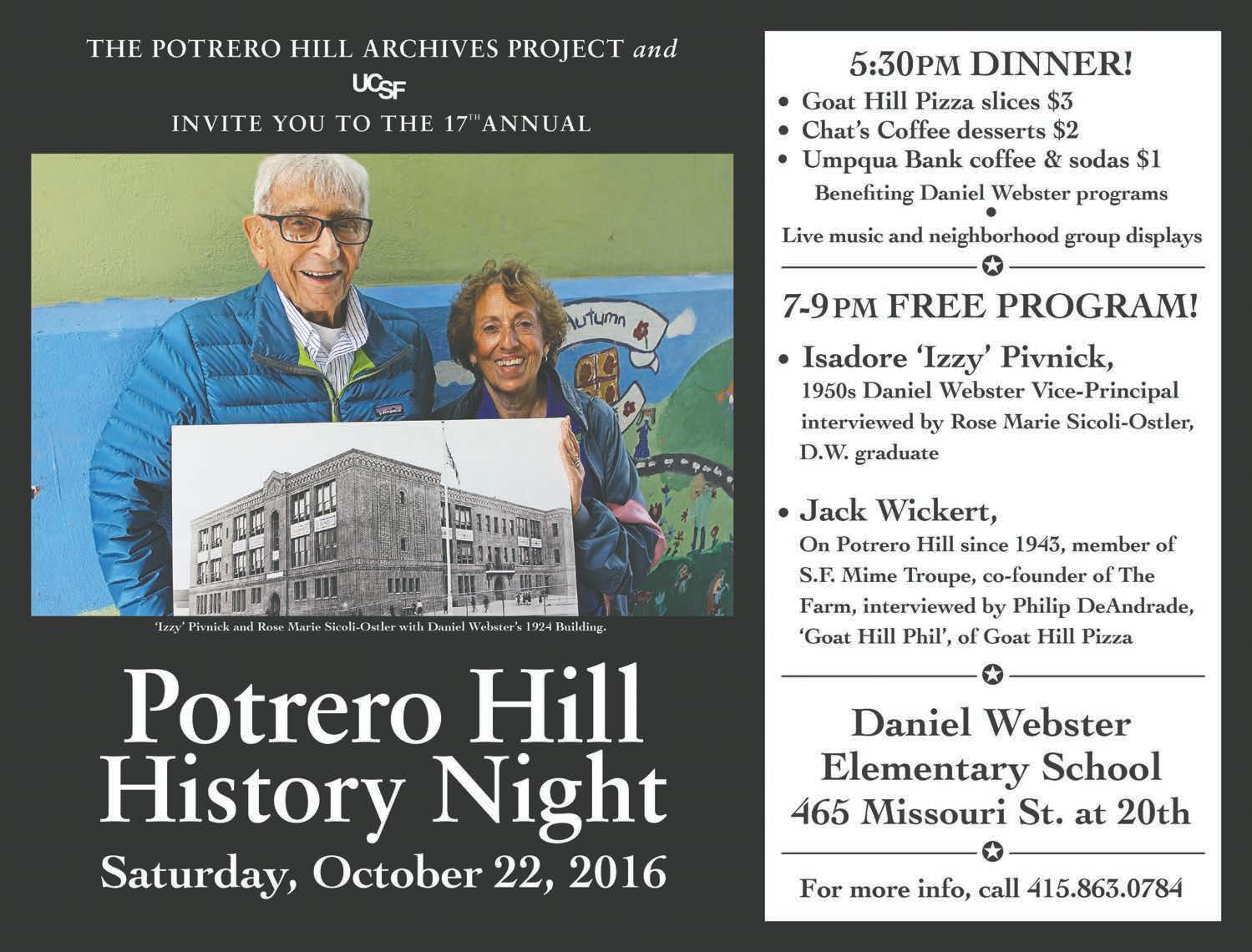

PROPOSITION O is the next step in revitalizing the long-abandoned former naval base that was once an economic engine for the Bayview, Hunters Point and Candlestick Point. It ensures that new housing, jobs and parks that have already been approved by San Francisco voters in 2008 will be created faster to help the many families who need them now.
This measure will:
d Speed the creation of 12,000 new homes, with approximately one-third of those homes a ordable for low- and middle-income families;
d Generate thousands of construction jobs, support job training programs and provide for about 17,000 jobs, with a local hire commitment;
d Jump start the transformation of the former Shipyard and Candlestick Point into over 300 acres of new public parks, walking paths and bike trails for neighborhood residents; and
d Enable construction of an African American marketplace at Candlestick Point along with a new shopping corridor for neighborhood-serving businesses.
In 2008 San Francisco voters approved the Shipyard/Candlestick Point Development Plan. Prop O will exclude the project from the City’s annual o ce construction quotas and allow all parts of the project to move forward together as quickly as possible.
SUPPORTED BY BAYVIEW HUNTERS POINT COMMUNITY LEADERS
Former Supervisor Sophie Maxwell
Dr. Veronica Hunnicutt , Chair, Hunters Point Shipyard Citizen’s Advisory Committee*
Shamann
DJ Brookter , Executive Director, Southeast
Linda Fadeke Richardson , former Chair, Land Use, Planning and Transportation, Bayview Hunters Point Project Area Committee*
Pastor Arelious Walker
Theo Ellington , President, Black Young Democrats of San Francisco*
Al Williams , President, Bayview Merchants Association* (partial list)
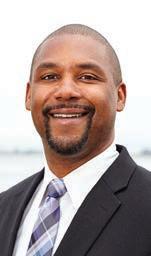
“Our community is already seeing benefits from this project. The Alice Gri th Housing rebuild is in progress. Over 5,000 new jobs have been created so far with 63 percent going to minority workers. Almost $2 million has been spent on job training and another $1.7 million on grants to community organizations.
This measure means that we will add more jobs even faster, as we build more a ordable and family housing. Join me in saying Yes to Jobs, Housing and Parks Now.”
SHAMANN WALTON
www.JobsHousingParksNow.com

 BY PETE LUDÉ
BY PETE LUDÉ
It might not be apparent from the Billboard Hot 100 charts or Teen Choice awards, but a variety of musical genres attract today’s youth. Many San Francisco schools offer excellent jazz and classical music programs. Choral groups and Broadway show tunes are also well represented. This year’s Potrero Hill Festival, on Saturday October 15, will feature another example: an accomplished bluegrass band consisting of talented 12 to 16 year-olds.
Potrero Hill resident Helen Ludé, 13, got hooked on Bluegrass music at a young age, while attending Bluegrass
Next Meeting: Monday, October 24, 6:30pm
UCSF at Mission Bay, Genentech Hall, Room N-114
campouts and festivals with her family. Inspired by other kids playing music at these events, she began learning guitar and fiddle. While attending a music festival in 2011, Helen and three of her friends were invited to play a few songs together on a side stage, and were asked what their “band” was called. They added up their collective ages, and settled on the name Thirty-Five Years of Trouble.
Five years later, the kids still play music regularly, and have performed at bluegrass festivals, fundraisers and farmer’s markets throughout California. They were invited to the
BLUEGRASS continues on page 22





The Dogpatch Community Task Force has been formed to identify and discuss potential impacts and solutions of UCSF’s proposed development in the Dogpatch neighborhood. The group is composed of Dogpatch and Potrero Hill neighbors and merchants, city staff and UCSF staff.
UCSF is currently planning two developments in Dogpatch that will be the focus of the discussion:
• Graduate student and trainee housing at 560, 590 and 600 Minnesota Street
• Department of Psychiatry Child, Teen and Family Center at 2130 Third Street
MEETING SCHEDULE:
Thursday, September 29, 2016
Monday, October 24, 2016
Monday, November 28, 2016
Thursday, January 19, 2017
Wednesday, February 22, 2017
Tuesday, March 21, 2017
For more information, contact Michele Davis at Michele.Davis@ucsf.edu, 415-476-3024.
To be on our notifi cation list, email community@cgr.ucsf.edu, specifying the campus site(s) of interest: Parnassus, Mission Bay, Mount Zion, Zuckerberg San Francisco General Hospital. UCSF fully subscribes to the Americans with Disabilities Act. If at any time you feel you have a need for accommodation, please contact UCSF Community and Government Relations at 415-476-3206 or community@cgr.ucsf.edu with your suggested accommodation. UCSF Mission Bay Campus is accessible using the MUNI T-Third light rail line and bus #55. If you need to drive, please park at no charge in the 3rd St. Garage along 4th Street, one block north of 16th Street. Parking vouchers will be provided.








“
I’m all about helping my customers reduce their energy costs. We want you to know you have options—ways to take control and save.”
Jerris r obinson Senior Service Representative

That’s why we offer a variety of rate plan options tailored to fit the unique needs of the customers we serve.
We want you to be able to find the rate plan, programs and services that best meet your needs. Explore your options and start saving at pge.com/rates
On August 20th, the casual Latin American restaurant, The New Spot, closed its doors after ten years of operating from 632 20th Street. According to co-owner, Gilberth Cab, he was unable to renegotiate his lease with the property’s landlord.
Months after The New Spot’s 2006 opening, a San Francisco Chronicle reviewer described the establishment as a “small restaurant” that offered a “mix of Mexican and Salvadoran cuisine” with some “surprisingly exotic” and “harder-to-find dishes.” At the time, a menu item cost less than ten dollars. Prices remained affordable until the end; when the restaurant closed in August the most expensive entrée cost $15.
Cab, a former pig farmer from Mexico’s Yucatan Peninsula, learned to cook from his grandmother. After moving to San Francisco, he worked at the American Industrial Center’s Jolt ‘n Bolt Cafe for a decade before launching The New Spot with his wife, Julia Rivera Posada. Their restaurant was a longtime lunch favorite among Dogpatch workers and, later, with the neighborhood’s residential growth, found success as a dinner destination.
Growing more ambitious, the couple opened the nearby sandwich shop, Oralia’s, in 2009—a victim, in Cab’s view, of the Great Recession— and then, in 2012, on the same Third Street business corridor, the full service restaurant Gilberth’s Rotisserie and Grill, which prompted a critic from the San Francisco Examiner to proclaim that she “had never eaten a finer $10 lunch.”
Operations continue at Gilberth’s, which, in the wake of The New Spot’s
shuttering, has absorbed portions of the earlier endeavor’s menu. “We’ve started to see a lot more familiar faces from The New Spot coming into Gilberth’s,” Cab noted.
Rebranded Gilberth’s Latin Fusion Restaurant, Cab’s new vision for the eatery at 2427 Third Street reflects a merger between the chic, seasonal pan-Latin American cuisine that has characterized his eponymous restaurant since its opening and The New Spot’s simpler fare. “We’ve still got the burritos, tacos, and all of the goodies from The New Spot here at Gilberth’s Latin Fusion,” he said. “We’re not gone. We’re still here in the neighborhood.”
The New Spot will survive, additionally, as a catering company, but according to Cab, its fate on 20th Street was sealed when its landlord decided that “they had different plans for the building.”
“We were willing to pay the amount they were asking. It’s just that they wanted someone else in the building,” Cab explained. “We offered everything they wanted. They just didn’t want us there.”
The new 632 20th Street tenants will be another husband-and-wife team, Michael and Stephanie Gaines, who plan to open the taco shop and margarita bar, Glena’s, in early 2017. Mr. Gaines cooked for the fine-dining landmarks Manresa and Central Kitchen before winning acclaim as the opening chef for the Michelin-starred Thai restaurant Kin Khao.
The couple resides in Potrero Hill and commented that they “love the neighborhood,” the restaurants in Dogpatch, and especially Olivier’s, the Illinois Street butchery from which The New Spot often sourced its meat, as Gilberth’s still does.
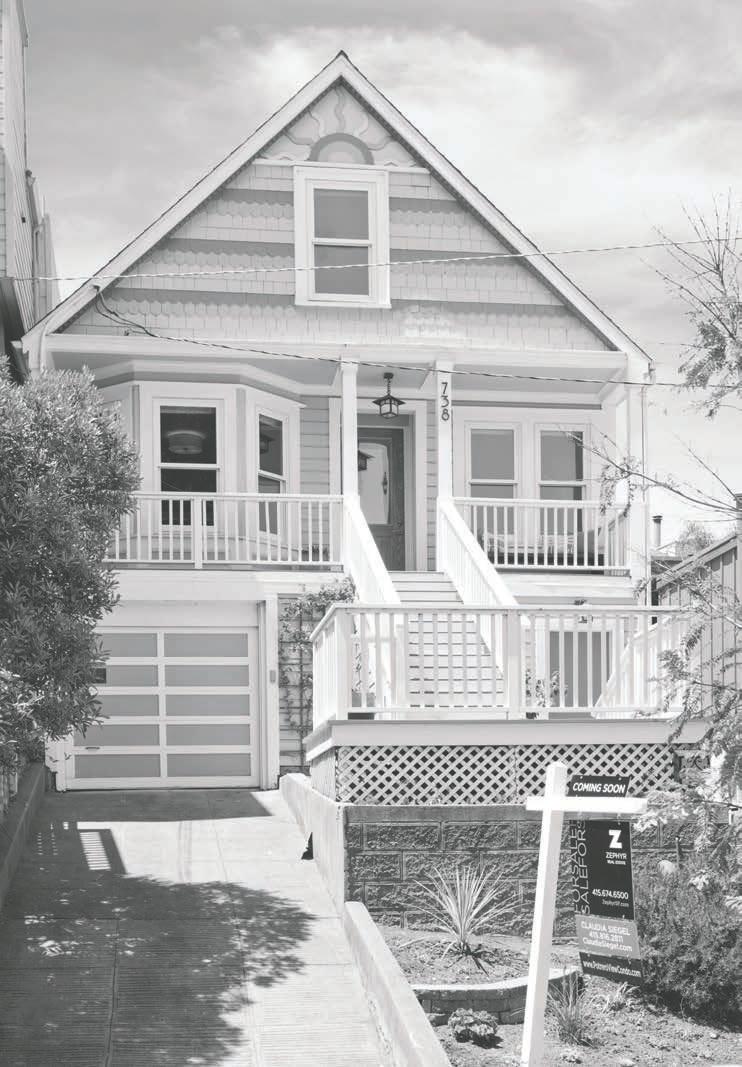
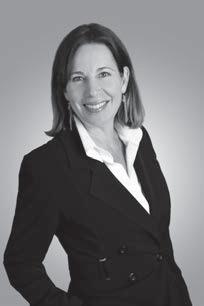
For their part, Cab and Posada plan to continue honing their restaurant concept at Gilberth’s, with a goal to create “a business model that works for us and for our customers.” They could conceivably open a second loca-
tion in the future. For now, however, they simply hope to build “a business that is successful; it’s busy, and it’s for everyone, not just owners of companies; it’s for everyone.”
Ori Systems, based in Cambridge, Massachusetts, wants to improve the livability of small housing spaces, even those with less than 300 square feet, through the use of robotic furniture.
Research behind the robotic systems was first conducted at the Massachusetts Institute of Technology Media Lab, founded in 1985 to promote graduate level research into technology that transcends the confines of academic disciplines as a way to assist humanity adapt to the future. Media Lab researchers Hasier Larrea, Daniel Goodman, Oier Ariño and Phillip Ewing worked on the “CityHome” project to develop strategies for “living large in a tiny space” from 2011 until they graduated in 2015. Ori Systems co-founder Larrea then partnered with Potrero Hill-based fuseproject designer, Yves Béhar, to develop their products, testing the systems with Airbnb renters.
“We wanted to see how we could bring robotics into real estate and
architecture,” said Larrea. “We asked; how can we use technology to make spaces more efficient and intelligent?”
The CityHome researchers identified a need to think differently about residential architecture given increasing global urbanization. Population growth, coupled with more people moving from rural areas to cities, has led to rising rents and displacement of working class people, youth, the elderly, the disabled and singles. Some have been priced-out of real estate markets; others have downsized to smaller, more affordable, living spaces.
According to United Nations’ statistics, by 2050 the world’s urban centers will grow by an estimated 2.5 billion people. The California Department of Finance forecasts that the state’s population will swell to 51.7 million by 2060. For Larrea, this unprecedented urban concentration presents a host of new problems that haven’t been addressed by the real estate industry.
In What if Furniture Had Superpowers, which Larrea presented for
TEDx Cambridge, he claimed that for millennia living spaces have been designed predominantly for specific, single-purpose, pre-ordained functions that end up unused most of the time. While Larrea’s assertion may have a weak basis – for most of human history small dwellings hosted multiple functions, such as cooking, cottage industries, and animal husbandry – urban growth may necessitate a doubling of housing stock over the next decade; status-quo building designs could contribute to intensified use of high rises, crowding, lower housing affordability, and reduced livability in major cities.
The amount of square footage largely determines real estate costs; downsizing to smaller spaces appears to be the only recourse for many people. According to Larrea, architectural robotic technology would reduce the need for space by eliminating singlefunction rooms. “We want to change the paradigm of how we think about spaces. We usually think of how best to adapt to living spaces, but we want
to liberate people from that. We want spaces to adapt to us,” Larrea said.
Ori Systems got its name from “origami,” the Japanese art of paper folding. The company has developed units that transform to different living configurations at the push of a button. The technology is equipped with preset features, and is compatible with smartphones. The units can change a room’s functionality from office areas to sleeping quarters, and to configurations for entertainment and social gatherings with virtually no effort on the part of the dweller. “Right now, the mindset is that square footage is the magic number; more square footage is seen as being better, but with this you can make 300 square feet function like 900 square feet,” explained Larrea.
Benjamin Kimmich, chief executive officer of AVAVA Systems, designs and builds pre-fabricated, detached, living spaces, ranging from 264 to 480 square feet, that’re customizable and feature sustainable materials.
On October 15th, the 27th annual Potrero Hill Festival returns to 20th Street, offering food, local musicians, crafts, a special health and wellness section, and an array of children’s rides. Admission to the street fair, which sprawls across four blocks between Wisconsin and Missouri streets, is free.
Potrero Hill resident Joshua Klipp and his swinging Klipptones will once again kick-off the Festival on the main stage at 11 a.m. New this time is 35 Years of Trouble, a bluegrass band consisting of talented 12 to 16 year-olds, including from the Hill. Headliner MJ Brass Boppers is an authentic New Orleans singing and swinging brass band that fuses traditional New Orleans standards, funk, jazz, modern pop, with a second line twist! Fei Tian returns with a performance of traditional Chinese dance.
Kid’s rides at the Festival include a Choo-Choo train. The Teen Stage will have a talent contest, featuring prizes. Food trucks from Off the Grid, as well as local merchants on the street, will offer chow. The Good Life Grocery will have its annual farmer’s market, with fresh, cold coconuts for sale.
Booths will feature more than 80 arts and crafts vendors and local organizations. The Festival closes at 4 p.m.
The Potrero Hill Festival raises money for Potrero Hill Neighborhood House initiatives, such as the Senior Nutrition Program, Good Faith Employment Programs and Experiment in Diversity.
For more information about sponsorship or renting a booth at the street fair, visit: www.potrerofestival.com.
BLUEGRASS from page 19
annual International Bluegrass Music Association event in Raleigh, North Carolina last year, and have released their first CD.
Thirty-Five Years of Trouble includes Helen Ludé on vocals, mandolin and fiddle, Tessa Schwartz, 12, on fiddle and vocals, John Gooding, 14, on guitar and vocals, and his brother Jake Gooding, 16, on acoustic bass. The band features tight threepart harmony vocals which capture the “high and lonesome sound” distinctive to bluegrass music. The quartet has a large repertoire of songs, ranging from traditional bluegrass classics, hot instrumentals, gospel quartets and contemporary folk-inspired ballads. It received an enthusiastic response at the Fiesta on the Hill in Bernal Heights last year, and debuts on Potrero Hill at this year’s Festival.
More information at www.35YearsOfTrouble.com.

PARK from page 10
One project in process at Hilltop Park is a paved pathway with open space and a sculpture garden, which is being constructed by OCII through a $1 million grant from the U.S. Economic Development Administration. Nine sculptures are situated along the pathway, including “Frame,” a large Rococo picture frame that visitors can walk through and take selfies with the Bay in the background.
The San Francisco Shipyard will ultimately house between 25,000 and 30,000 people. OCII expects many more to visit the playgrounds, art, and open space that’ll extend to the City’s edge. “We are thrilled to see the transformation of these spaces in Mission Bay and Hunters Point Shipyard,” said OCII executive director Tiffany Bohee. “The parks are key investments in our City’s families, youth, and neighborhoods.”
She added that the Kids’ and Mariposa parks are examples of community-driven planning that maximize public space. “These parks are providing families and residents with room to gather and play in a growing neighborhood. We are looking forward to welcoming residents to new parks in the Shipyard soon. OCII invites all residents of the southeast to participate in the planning effort currently underway for Northside Park,” said Bohee.
Northside Park, scheduled to open in 2021, is part of the Shipyard Phase 2 project. It’s been imagined as a place to hold musical performances, an
African-themed marketplace, and an open air farmers market.
ORI from page 21
Kimmich is familiar with other architectural robotic technologies, but views the Ori Systems products as more promising given their appealing designs and the versatility they offer as stand-alone systems that could be added post-construction.
“We have a floor plan that visualizes bedroom furniture. We’d have to imagine what a furniture plan looks like, and we would draw a specific floor plan around this type of furniture. It’s definitely something we would look into as it seems to fit with our own design values,” offered Kimmich.
For Kimmich, a particular challenge for small-space living is that it’s not always feasible to entertain guests for dinners or parties, especially in rooms that’re only 300 square feet. Ori Systems products not only have the capability to make spaces functionally much larger, but the technology can make home social gatherings stimulating by fueling conversation around these innovations and providing architectural interest.
“More and more people young people are going to want to get into home buying,” Kimmich added. “As the economy is coming back, more people want to stop renting and get into the micro-home market.”
Larrea emphasized that Ori Sys-
ORI continues on page 27




Book Launch: Mad
Hungry Family: 120
Essential Recipes to Feed the Whole Crew
Lucinda Scala Quinn is an evangelist for daily family meals. Her book offers survival strategies for nothing-inthe-fridge crises, feeding unexpected guests, getting Thanksgiving dinner on the table before your family revolts, and more. Free. 6:20 p.m. to 7:30 p.m. Omnivore Books on Food, 3885a Cesar Chavez Street. www.omnivorebooks.com/events.html
10/5 Live Music Daniel Berkman
Potrero Hill resident Daniel Berkman is a composer, multi-instrumentalist and innovator of the kora, a 21- stringed harp/lute from West Africa. 7:30 p.m. to 9 p.m. Farley’s, 1315 18th Street.
Benefit: Slide Ranch
Slide Ranch will transform San Francisco’s hottest new event space, The Pearl, located in Dogpatch, into a rock and roll rooftop bar, farm-to-table picnic, and concert stage, to celebrate its 2016 Silver Trowel honoree, James “JC” Curleigh. Dance the night away, with a surprise special guest musical superstar after an interactive dinner catered by Estate Events, by Meadowood of Napa Valley. 6 p.m. Tickets: $501. For tickets and information: slideranch. org/silver-trowel-2016.
10/6 California College of the Arts
Hubbell Street Gallery Opening Reception
The opening exhibition, Local Resource, is a thematic program presented in collaboration with local partners to introduce and showcase art and community resources in Potrero Hill, Dogpatch, Mission, Mission Bay, and South-of-Market. On view until October 15; opening reception for the neighborhood October 6. 5:30 p.m. to 7:30 p.m. 161 Hubbell Street, near 16th Street. http://tinyurl.com/jbfx4o2
Arab Film Festival Opening
The festival opens with the US premiere of Clash, the Egyptian entry to the 2017 Oscars. Described as “bravura filmmaking with a kick-in-the-gut message” by the Hollywood Reporter, Clash was widely praised after opening at the Cannes Film Festival a few months ago. Mohamed Diab’s film is set entirely within a padded wagon, traveling through the streets of Cairo in 2013, as supporters of Morsi’s toppled government and Muslim Brotherhood members fight each other inside and out. 7:30 p.m., Castro Theatre, 429 Castro Street. Tickets: $15 - $175. http://tiny.cc/1at3ey
10/7 – 11/5 A Promise Not to
Forget: Día de los Muertos 2016 Exhibition
The 17th annual Day of the Dead Exhibition celebrates the lives of artists and activists Cynthia Wallis, Silvia Parra and Martha Rodriguez. Chosen by father and son curators René and Rio Yañez, this year’s theme, A Promise Not to Forget, is a call to remember our ancestors and honor those whose lives have been lost due to violence. Free admission during gallery hours. SOMArts Cultural Center, 934 Brannan Street. Information: www.somarts.org/ promise
Halloween Haberdashery & Other Headgear
Explore the assemblages of artist Marianne Lettieri, then design and build your own unique headpiece from found and repurposed materials, for Halloween, Carnivàle, the Beaux Arts Ball, or anytime! For ages six to 12. $10 non-member
child; $5 member. 1:30 p.m. to 3:30 p.m. Space is limited. Tickets: http:// bit.ly/2bMYxtb Museum of Craft and Design, 2569 Third Street.
10/8 – 10/9 Sustainability: 17th Annual World Veg Festival
The San Francisco Veg Society organized the World Veg Festival to educate and inspire people about the benefits of a vegan, plant-based lifestyle. Featuring speakers, chefs, and presenters on the topics of vegan health, ethics, animal rights, good eating and more. Fun, food, entertainment and activities for the whole family. 10 a.m. to 6:30 p.m. Tickets: $10 general admission; $5 for students with identification, seniors 62+, and youth under 18. San Francisco County Fair Building, Golden Gate Park, 1199 Ninth Avenue. Information: www. worldvegfestival.com.
San Francisco Decompression – Burning Man
Burning Man Presents the 17th Annual San Francisco Decompression Heat the Street Faire. 12 p.m. to 12 a.m. Indiana Street.
10/9 Election: 2016 Presidential
Debates Watch Party – SoMa StrEat Food Park
Happy hour specials from 4 to 7 pm, with 10 big screens televisions featuring surround sound and food trucks. 6 p.m. to 7:30 p.m. 428 11th Street.
Book Launch: Steve Young
In QB: My Life Behind the Spiral, former San Francisco 49er, Super Bowl champion, National Football League Most Valuable Player, and Hall of Famer, Steve Young, gives readers an inside look at what it takes to become a superelite professional quarterback. 11 a.m. Tickets: $34 includes signed book. Book Passage, 1 Ferry Building, San Francisco.
Potrero Hill Festival
Join the Potrero Hill Neighborhood House at this annual fest, featuring friends, families, rides, craft booths, food, and fun, with local bands The Klipptones and 35 Years of Trouble, and tours of Daniel Webster Elementary School’s renovated campus. Saturday, October 15, 11 a.m. to 4 p.m. To become a vendor or for more information: www.potrerofestival.com
Live Music by Soul Delights
Come for a lively performance. 7:30 p.m. to 9 p.m. Farley’s, 1315 18th Street.
10/19 Community: Dogpatch & Northwest Potrero Hill Green Benefit District General Board Meeting GBD is dedicated to greening, cleaning, and beautifying Dogpatch and NW Potrero Hill public spaces. 6:30 p.m. to 8 p.m. Free. Tivoli Room at the University of California, san Francisco, 654 Minnesota Street. Information: www.dnwph-gbd.org
Live Music by John Lewis and Gary Schoofs
Come enjoy covers of the Beatles, Eagles, Everly Brothers, Simon & Garfunkel, Joni Mitchell, and Crosby, Stills, Nash and Young. 7:30 p.m. to 9 p.m. Farley’s, 1315 18th Street.
Separate Sentences
Separate Sentences is a dance/theater film that draws on individual experiences and physical memories of a cast of formerly incarcerated men—all of whom are fathers—addressing the cycle of incarceration in families, prin-
cipally between fathers and sons. Separate Sentences was shot on Potrero Hill, and is part of the San Francisco Dance Film Festival. Saturday, October 22, 9:30 pm. Brava Theater Center, 2781 24th Street. Tickets: $15. Students: $13, identification required. Festival runs to October 23. Information: www.sfdancefilmfest.org.
Halloween: Scaregrove Family-Friendly Halloween Event
This annual event at Sigmund Stern Grove features costume contests, haunted houses, hay rides, carnival rides, giant inflatables, food for sale, and live entertainment. $8 per person; children under two years old free. 3 p.m. to 9 p.m. More information: sfrecpark.org.
Halloween: Farley’s 27th Annual Pet Parade Parade starts at 1 p.m. at the corner of 18th and Arkansas streets, marches up 18th Street. Costume judging at 18th and Texas.
Halloween: On the Hill Back in the day families gathered at Jackson Park and, at sunset, marched
towards 18th Street, trick or treating along the way, arriving at the commercial district for a frenzy of merchant giveaways, including pizza slices at Goat Hill, and bundles of hay at The Good Life Grocery on 20th Street. The parade could happen again this year, but no doubt local retailers and food outlets will reprise their decades of generosity, not to mention the occasional neighborhood haunted house.
11/1 Benefit: Walt Disney Family Museum Gala at Disneyland Resort
The Walt Disney Family Museum holds its second annual fundraising gala benefiting the Museum’s initiatives to support the next generation of creative talent. The event honors Marty Sklar, Disney Legend and Walt Disney Imagineering Ambassador. For more than half a century, Sklar has shared the magic of Disneythemed entertainment with people around the globe. Actor Neil Patrick Harris will serve as Master of Ceremonies. 6:30 p.m. Disney’s Grand Californian Hotel & Spa, 1600 Disneyland Drive, Anaheim. For ticket information or table sponsorship opportunities, contact Carma Zisman, Director of Institutional Advancement, czisman@ wdfmuseum.org.

Potrero Dogpatch Merchant’s Association meets the second Tuesday of each month at 10 a.m. at Goat Hill Pizza, corner of Connecticut and 18th streets. Website: www.potrerodogpatch.com. Call 415.341.8949. Next meeting: October 11th.
Starr King Open Space meets for monthly Stewardship Day the second Saturday of each month from 9:30 a.m. to 12:30 p.m. at Starr King Open Space, corner of Carolina St. and 23rd St. Come out and meet your neighbors, be a community steward, enjoy the natural grassland habitat, see spectacular views, and celebrate our beautiful neighborhood open space. Everyone is welcome. Find out more at www.starrkingopenspace. org or facebook.com/StarrKingOpenSpace.
SOMA Rotary Club meets the second and fourth Thursday of the month at Mission Rock Resort, 817 Terry Francois Blvd. We meet at 6 p.m. for a mixer and 7 p.m. for a dinner meeting. We provide community service to the Mission Bay, Potrero, and Bayview communities. The focus is on providing services for the under-served of our community. The website is located at: www.meetup.com/Mission-Bay-Rotary-Club. For more information contact Nine at: n.ladow@comcast.net.
Potrero Hill Garden Club usually meets the last Sunday of the month at 11 a.m. for a potluck in a local home or garden. We occasionally visit gardens such as Ruth Bancroft, Yerba Buena, Cornerstone, Filoli, and the rooftop garden at the Fairmont. We discuss gardening appropriate for Potrero Hill’s microclimates, and often have speakers on subjects such as drought, wind, shade, pests, and even flower arranging. Call 415.648.1926 for details.
Dogpatch & Northwest Potrero Hill Green Benefit District meets once each month from 6:30 p.m. - 8 p.m. in the Tivoli Room at UCSF, 654 Minnesota Street. Our mission is to clean, maintain, enhance, and expand open spaces, parks, plazas, parklets, gardens, sidewalk greening and the public realm in general in the Dogpatch and Northwest Potrero Hill neighborhoods; support community and volunteer efforts; and promote sound ecological practices and green infrastructure with a locally controlled, sustainable and transparent funding structure. Next meeting is October 19th. Visit our website to see what we are working on near you! www.dnwph-gbd.org
In Brown Is the New White: How the Demographic Revolution Has Created a New Democratic Majority, published last winter by The New Press, Potrero Hill resident Steve Phillips argues for a national politics that works to combat racial injustice and wealth inequality while extending relief to undocumented immigrants and protecting the environment, without what Phillips characterizes as the compromises that’ve slowed the progressive movement.
It’s a vision rooted not in idealism but in numbers. Phillips presents a statistical analysis of America’s rapidly changing demographics as the basis to assert that the traditional liberal strategy—which, he writes, seeks to appease and reassure moderate European-American voters prior to determining what can be done to energize progressives—has become an increasingly impractical pathway to elected office for the Democrats. Phillips quotes Connecticut governor Dannel Malloy: “We have to speak to majorities. And we’re probably never going to have a majority made up of middle-aged White men.”
While elucidating the historical and psychological reasons behind the Democratic Party’s tendency to undervalue its reliable minority base, Brown Is the New White employs U.S. Census and exit poll data to make a compact, yet far-reaching, case for the increasing irrelevance of America’s coveted “swing voters”—the shrinking, mostly White segment of the population that vacillates between voting Republican or Democrat. People of color now constitute at least 29 percent of the electorate; Phillips characterizes 80.5 percent of them as “progressive.” These voters, along with the 39 percent of EuropeanAmericans who consistently support Democrats, comprise 51 percent of all eligible voters.
The number of these eligible voters that have shown up at polling stations has varied between elections, in part as
COVE from page 14
board park, and native garden, among other things, at the cove. The guidelines proposed to expand the park by approximately 2.5 acres to the south, adding new vegetation, lighting, site furnishings, public art, and enhanced safety features.
However, as Beaupre pointed out, the neighborhood has undergone a significant transition since then. “Park users have changed, the community dynamic has changed. We always go back to the community,” he said. “The ideas are conceptual; they help to come up with cost estimates.”
Last year the San Francisco Planning Department launched the Central Waterfront/Dogpatch Public Realm plan. “Dogpatch has been rapidly transitioning into a more residential neighborhood,” said Robin Abad Ocubillo, Public Realm Plan project manager. “That really shifts the expectations that people have about open spaces and streets and sidewalks.”
a result of the attitudes and strategies of the candidates put forth by the Left. According to Phillips, liberals—who incorrectly blamed their losses in the 2010 and 2014 midterm elections on scarce support from working-class Whites, without seeing that the real problem was a lack of voter turnout in Black and Latino communities—haven’t yet come to understand the full power of what he terms the “New American Majority.”
In Phillips’s view, “much of modern-day politics is still conducted as if the population of America is as White as it was fifty years ago.” Democrats continue to chase “exurban voters” and “soccer moms,” neglecting the more pressing requirement to enact legislation and embrace policies that would ensure that people of color—who, in terms of U.S. population growth, outpace Whites seven to one—are inspired enough to go to the polls. Phillips’s argument appears to have caught on: his book made the New York Times bestseller list in March and April.
Nearly all of Phillips’s 247-page text was composed inside Philz Coffee, at 17th and De Haro streets. Phillips, an Ohio native who came to California to attend Stanford University, has lived with his wife, philanthropist Susan Sandler, on the Hill since 1992, first on Connecticut Street; then Arkansas Street. As reported in the View, President Obama made a fundraising visit to the Phillips-Sandler home last May.
Phillips called the neighborhood “politically progressive and down-toearth” and enjoys “the level of continuity” on the Hill amidst a changing City and increased property values. “Our next-door neighbor has grown up on this street, and next door to him is his mother, who grew up on this street,” he observed. “The essential character has been retained.”
Initially, Phillips moved to San Francisco to work on a school reform project with the nonprofit law firm Public Advocates Inc. That led him to run, at the age of 28, for a seat on the San Francisco Board of Education. He served for eight years, including
The Planning Department is coordinating with the Port, San Francisco Municipal Transportation Agency, Department of Public Works, and Parks and Recreation Department to determine what improvements should be made to open spaces and streets throughout Dogpatch. Warm Water Cove is one of three green patches – as well as Esprit and Tunnel Top parks –that were prioritized by the Planning Department through a four month online polling effort that lead-up to a public meeting last spring. As part of the survey, Potrero Hill and Dogpatch residents were asked to review a long list and maps of open spaces, and tell City departments which ones needed the most immediate attention and investment.
At a second spring workshop participants expressed their appreciation for Warm Water Cove’s “naturalistic” landscape, as compared with parks that have a contemporary edge. Community activists like its picturesque,
COVE continues on page 27
one as president. In 1998, he led a controversial effort to diversify the San Francisco Unified School District’s literature curriculum, which ultimately made San Francisco the first in the nation to adopt a mandate that public school reading lists include works by writers of color.
In the same year, Phillips—who had been working toward his Juris Doctor degree at the University of California, Hastings College of the Law—opened his own law practice. He returned to politics in 2002 with a bid for the California State Assembly. After losing the Democratic race to Mark Leno, he focused on building political advocacy groups, including Vote Hope and PowerPac, which, by Phillips’s calculation, “coordinated the largest independent effort in the country supporting Obama’s presidential run” in 2008. Phillips’s work in this sphere has centered on voter mobilization. In 2012 he teamed with California Common Cause on a successful campaign to pass online voter registration in the state.
In 2014, Phillips paused his advocacy work to write his book. He said it was “a sabbatical to a certain point, where you get to step back and think about things.” He’d been an English major in college, but “I hadn’t had a chance to immerse myself in writing in a long time, so I enjoyed that, and that is what I want to be doing more going forward.” He now writes a monthly column for The Nation and, with his social justice organization PowerPac+, has launched
the “multimedia platform” Democracy in Color, to which he contributes regular articles. He plans to update Brown Is the New White to reflect, in its second edition, the stories that’ve emerged during the 2016 election, including the rise of Donald Trump.
Phillips believes that Democrats must be “forceful about painting [Trump] as a bigot,” but worries that “there’s still too much timidity and fear of alienating White swing voters.” He acknowledged that “Clinton gets the need to embrace voters of color better than most people in the Democratic Party, so there’s progress in that regard,” but wished she’d chosen New Jersey Senator Cory Booker, instead of Virginia’s Tim Kaine, as her running mate.
“Almost all of the top positions in the Democratic Party are controlled by Whites,” Phillips pointed out, “and this is a party that is 46 percent people of color, so it remains a big problem.”
Brown Is the New White is, in large part, a chronicle of similar frustrations: according to Phillips’s landmark 2014 audit of Democratic Party spending, “97 percent of political contracts go to White consultants.” Yet the book is optimistic, not just for the future but for the present. As Phillips states in the introductory chapter, “America has a progressive, multiracial majority right now that has the power to elect presidents and reshape American politics, policies, and priorities for decades to come. Not in 2044. Not ten years down the road. Today.”

Production of Young Jean Lee’s The Shipment – through October 15 – by Crowded Fire Theater at Potrero Hill’s Thick House marks only the third Bay Area staging of the work of the Brooklyn-based experimental dramatist the New York Times called “the most adventurous downtown playwright of her generation.” It was here, however, that Lee—a Koreanborn woman raised in eastern Washington State, who earned a Bachelor of Arts in English from the University of California, Berkeley, and stayed on for graduate studies—first recognized her theatrical ambitions, when, in the midst of a “nervous breakdown” and a failing marriage, she gave up on her doctoral dissertation and realized during a therapy session that what she really wanted to do was write plays.
The provocative, playful art that Lee has generated since 2003 reflects a diverse body of concerns—racism, feminism, identity, and religion chief among them—and exemplifies a wide range of styles. As a writer and director, she’s put forth wordless performance art, solo monologues, acid satires, and musical collages. Throughout, however, the unhappy source of her artistic career—which has won her a Guggenheim Fellowship and two OBIE awards—has remained insistently, almost disturbingly, visible, like a pulsating wound: a grave mental anguish that Lee’s desperate, anxiety-prone characters tend to address directly, in expressionless language, thereby foreshortening the dramatic form in striking fashion. Where a conventionally structured naturalistic drama would supply emotional trajectories through plot, interaction, and implication, the emotions in Lee’s pieces are stuck in place, within her blunted monologues. Her characters don’t evolve; only the play itself does. The pain described by the characters seeps into the architecture of the drama like an infection. The closed-loop mental patterns of clinical depression are embodied as aesthetic disruptions.
When Lee’s plays appear to seek narrative coherence, they fragment and crumble, as in 2004’s The Appeal, a comically enfeebled imitation of Tom Stoppard’s Arcadia in which, reflecting an authorial belief that nobody could possibly truly care about the erudite brand of historical theater to which the play purports to belong, the crippled monologues and indistinct whining of the drama’s main characters, ostensibly the Romantic poets Coleridge and Wordsworth, finally depict only the playwright’s indifference, boredom, and procrastination. In 2010’s Lear, a rewrite of the Shakespearean tragedy that was the subject of Lee’s abandoned doctoral thesis, the actors eventually give up on their characters, reverting back to themselves and their personal concerns.
Other plays dispense with character and plot from the beginning, presenting themselves instead as audience-facing “theatrical events” that, rather than breaking the fourth wall, decline to erect one to start with:
a self-help seminar, 2005’s Pullman, WA , an evangelical sermon, 2007’s Church , a mortality-focused TED Talk, 2011’s We’re Gonna Die . In most cases, these presentations—at first candid and engaging—gradually turn into wild hallucinogenic diatribes composed of imaginings – “a

rainbow-colored balloon in the sky that is filled with jackrabbits” and “mermaid torsos planted like bushes all around” – that go nowhere and mean nothing. But the artfulness of Lee’s punkish anti-art is formidable, her work’s spiky parts carefully arranged to challenge theatergoers on issues of philosophical, psychological, and political significance.
The Shipment, which concerns the representation of African-Americans in media, begins as a startlingly vulgar standup comedy act before transitioning into a lobotomized iteration of Lorraine Hansberry’s social realism, with both segments hinging on black stereotypes. When the black actors finally enter a “normal” play populated by “normal” characters, the audience slowly comes to understand that this is possible only because the characters they’re now playing are, in fact, white. In a clever touch, the black players are transported into whiteness by a Modest Mouse song, as if it were a sorcerer’s spell.
In Songs of the Dragons Flying to Heaven, a quaint, intergenerational Asian-American identity play in the style of Amy Tan’s fiction is soured by the abrasive ranting of a young, “cute” Korean-American girl who describes “Asian parents” as “retarded monkeys who can barely speak English and who are too evil to understand anything besides conformity and status.” As if to posit an explanation for the oddly detached emotional self-assessments that typify Lee’s troubled characters – and which frequently recall the literalistic introspection of the Asian-American novelist Tao Lin – the girl claims that Asian-American children “try to learn how to be human from school or television, but the result is always tainted by this subtle or not so subtle retardation.”
But just as the nature of the girl’s supposed candor is called into question, the play is invaded by a selfabsorbed, apolitical white couple that, amid romantic bickering, doesn’t even notice the Asian characters on stage. Lee redirects her focus onto the relationship problems of the white man and woman, casting her own interest in racial identity into doubt; or, then again, maybe not, depending on how you see it.
Lee’s self-subversions—for example, her blend of aggression

and ambiguity—constitute the principal life-force of her drama. Her plays are both truer than conventional theater, in terms of the urgent frankness with which they speak to the self-consciousness and paralyzing hopelessness of the diseased mind, and less true: their narrative worlds, to the extent that they exist at all, are deliberately shoddy and two-dimensional, and even the most heartfelt sentiments of Lee’s characters are rendered dubious by the cheekily manipulated false realities in which they’re uttered.
Young Jean Lee’s plays are undeniably political, yet the playwright notes that “making art about political subjects doesn’t count as concrete action and is a form of masturbation-rage.” Her dramas simultaneously denounce racism and seem at times to defend it. They contain habitual warnings against the dangers of alcohol and caffeine, and directly exhort audience members to accept the Lord God Almighty into their lives, while admitting just as often that “nothing is good and there is no hope in anything.” Whether these contradictions describe the shape
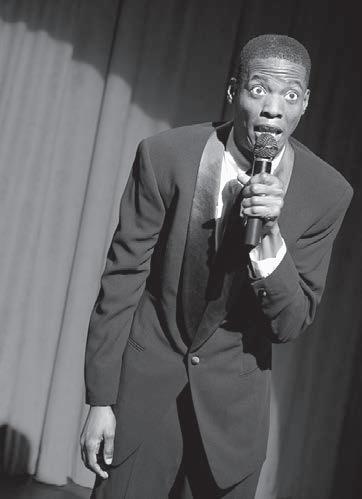
of artistic complexity or represent a frustrating avant-garde evasiveness is—like the myriad of other questions posed by Lee’s work—up to the theatergoer to decide upon, and that’s half the fun.


Chester scooped up a litter of glass on the sidewalk, carefully placing the particles in a plastic bag.
“Extra, extra!” Pete called out, as he strode towards Chester’s bent back.
“What?” said Chester, straightening-up. “Oh. Hi Pete.”
“Hey there,” said Pete. “Another smash and grab, eh?” He whistled softly. “It’s a regular epidemic, as you know from reading the Bolt,” he winked, though ineptly, like a three year old who could only master a fluttering kind of squint.
“Yeah, more like a smash and nothin; there’s nothing to steal.” Chester bent back down to finish his work.
“Anywho, I wanted you to be the first to see the latest issue, fresh off the press,” said Pete. He held up a copy of The SF Lighting Bolt. The headline on the cover, in two inch font, shouted “Pressure Mounts to Turn Plants into Park.”
“What?” said Chester. He walked the plastic bag to a public trash receptacle and threw it in before taking the paper from Pete. “What’s this?”
“It’s our lead article. About you,” Pete started to bob, “and community calls to turn your shop into a park.”
Chester stared at the article, blood rushing to his face. “Are you friggen kidding me,” he said, his voice rising. “I told you I didn’t have anything to say about the shop! And nobody’s talked to me about putting a park here…”
“Yeah, yeah, it’s all there,” said Pete, pointing to the paper. “Unknown buyers –probably the university medical center, trying to expand into the neighborhood – who want to purchase the property, its murky history, community reaction…”
“Murky history,” Chester blurted, his face red. “I can’t believe you print this garbage…”
“Hi guys!” An orange-haired 40-something woman had walked up, holding a leash attached to two small poodles, one black, one white. Chester, grasping his chest and breathing heavily, stared at Pete, who was bobbing.
“Hello, Joanne,” said Maggie, icily, as she stepped out of the shop. “What’s going on,” she said to Chester, putting a hand on his shoulder.
“Ask him,” Chester pointed towards Pete. “I’m out of here.” He got into the truck, fired the ignition, and pulled away.
“Pete, what’s going on?” Maggie repeated.
“Well, um, I was showing Chester our article, about the shop, and,” he looked towards Joanne, “community efforts to make it into a park.”
“What community efforts?” asked Maggie.
“PERP voted on it last month,” Joanne interrupted. “We emailed Chester inviting him to the meeting, but he didn’t show.”
PERP – Potrero’s Environmental Residents for Protection – was a small but insistent advocacy group, which tried to influence the size and scale of development in the area. Led by Joanne, its power mostly stemmed from its handful of members’ willingness to
attend endless community, Planning Department, and Board of Supervisors meetings.
Maggie glared at Joanne, and then turned towards Pete. “How dare you,” she seethed. “After everything Chester has done for you. If it was up to me, you’d be out the streets, rent control be damned. And you,” she pivoted back towards Joanne. “You put on a holy air, while all the while your boyfriend, or whatever he is, is pushing us to sell out to developers.” Flashing Pete a final glare, she strode back into the shop.
Pete bobbed while Joanne bent down to pick up a small pile of poop her black poodle had deposited, which the white poodle had been enthusiastically sniffing. “John Crocket is representing the developers who want to buy this place,” he said, slowing and the stopping his bobbing. “You’re dating him?”
“No comment,” said Joanne. “Come on, Civic and Pride,” she said, tugging at the leash. “Time for us to go.”
Each month the View publishes a chapter from Gold , a serialized tale of politics, capitalism, and corruption in San Francisco. Previous chapters can be found on the paper’s website, www. potreroview.net.
ORI from page 22
tems is the brains, muscle, and heart behind this innovative technology, rather than just a furniture company that makes living space accessories. The products are being tested by real estate developers in Seattle, Boston and Washington, D.C., and should be widely available next year.
“I hope between the prototype phase and market that it all goes well,” expressed Kimmich. “I love that they’re working on this.”
COVE from page 24
informal, design, but want to explore ways to take advantage of its views.
In keeping with the previous Port plan, it and the Planning Department, intend to almost double Warm Water Cove’s size. “There’s a whole swath of land along the southeast shore we want to incorporate into a larger park,” Ocubillo said. “At our public workshop in May we looked at the whole site and explored different ways the landscape design could extend into the southern portion, and how 24th Street might be changed a little to make the approach to the park more gracious, while respecting the heavy industrial uses and needs. Right now it’s hard to tell a park is there because it’s at the end of a street.”
Meeting participants generally supported planting native vegetation and adding lighting. The Planning Department used their input to craft a conceptual design, as a basis for more community feedback. The final plan will include cost estimates for the Warm Water Cove, Esprit, and Tunnel Top park projects, with an eye towards being incorporated into the City’s capital implementation plan.
“After the Public Realm Plan is


published, the next step for the City departments involves fundraising and financing to get these projects and open spaces delivered to the neighborhood as soon as possible,” Ocubillo said.
“There’s already a dedicated community around Warm Water Cove of longtime residents who volunteered time over the years, who take trash out, and have turned Warm Water
Cove into the asset it is today,” Ocubillo said. “It is an asset, and we need to honor all of the work and the perseverance and care that neighborhood residents put into the site by bringing it to the next level with lighting and a planting plan. That’s really important to remember; we’re not starting fresh.”
Daniel Webster Alumni, circa 1950s
NOTICE: REVERED VICE PRINCIPAL, Izadore Pivnick, will be interviewed on October 22, 2016 during the Potrero Hill History Night. Daniel Webster Elementary School, 465 Missouri St. at 20th.
Housekeeping
CLEANING PROFESSIONAL 28 years experience. Apartments, homes or offices and apartment buildings. Roger Miller 415-794-4411 References upon request.
Photography Consultant
Experienced photo technician, specializing in in-home/studio archiving and file management. Call 826.266.7587, for Sam.
PROTON RESEARCH SEEKS A FT
SOFTWARE ARCHITECT IN SF to lead the design of new technical architectures and solutions, create and continuously monitor upgrades and implementation of all back end arch., including the app programming interface, manage arch. change requests and lead the redesign of software infrastructure to grow from supporting 100k to over 100M users. BS in CompSci plus 48mos exp as Software Architect req, inc fluency in developing in multiple environments, inc Android, iOS, backend to frontend. Fax resumes to 866-849-7714.
CELEBRATE YOUR CHILD’S MILESTONES: The View is pleased to publish photographs and captions feting birthdays, graduations, sports achievements and the like. Send yours toproduction@potreroview.net
FREELANCE WRITERS: The View is looking for writers, with fee-basedcompensation provided. Contact: editor@potreroview.net
YOUR CONTRIBUTIONS WELCOME: Donations of any size are appreciated to support your neighborhood newspaper. Send checks to: View, 2325 Third Street, Suite 344 San Francisco, California 94106

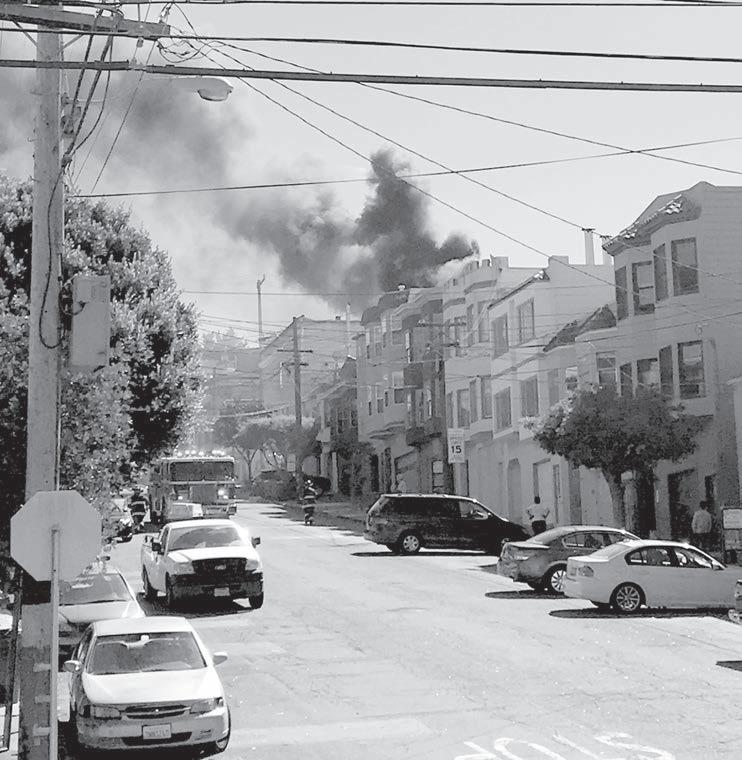
City and County of San Francisco Outreach Advertising
October 2016
CONCESSION OPPORTUNITY AT SAN FRANCISCO INTERNATIONAL AIRPORT
San Francisco International Airport is accepting proposals for the Terminal 3 Pop-Up Retail Concession Program. Proposals must be received by 2:00:00 pm San Francisco Time, Wednesday, November 9, 2016
These Agreements are intended for the nonexclusive sale of specialty retail merchandise, are comprised of two Pop-Up retail locations post-security in Terminal 3, Boarding Area E. Space 1 is approximately 304 square feet and Space 2 is approximately 429 square feet.
The Minimum Annual Guarantee for the term of the Agreement is $27,000.00 for Space 1 and $36,000.00 for Space 2. The terms are twelve months for each space, commencing on the first day Permittee is open for business. Annual Rent shall be the higher of the Minimum Annual Guarantee or 8% of Gross Revenues. In addition to the Annual Rent, tenant shall pay a Tenant Improvement Reimbursement Fee over the twelve month term of $20,523.00 for Space 1 or $28,962.00 for Space 2. Small, local and disadvantaged businesses are encouraged to participate.
An informational conference to review the Request for Proposals and to answer questions about the Pop-Up Retail contracts is scheduled for Wednesday, October 5, 2016, at 2:00 pm in the Terminal 2 Partnering Conference Room, at San Francisco International Airport. At this meeting Airport staff will explain the selection process, and discuss the desired concept, minimum qualification requirements, and address any questions relating to this Permit.
Please see http://www.flysfo.com/business-at-sfo/current-opportunities for additional information or should you have questions, please contact Mr. Trevor Brumm, Airport Revenue Development and Management Department, 650.821.4500.
Count on WIC for Healthy Families
WIC is a federally funded nutrition program for Women, Infants, and Children. You may qualify if you are pregnant, breastfeeding, or just had a baby; or have a child under age 5; and have a low to medium income; and live in California. Newly pregnant women, migrant workers, and working families are encouraged to apply.
WIC provides Nutrition Education and Health information, breastfeeding support, checks for healthy foods (like fruits and vegetables), and referrals to medical providers and community services.
You may qualify for WIC if you receive Medi-Cal, CalFresh (Food Stamps), or CalWORKS (TANF) benefits. A family of four can earn up to $3,747 before tax per month and qualify.
Enroll early! Call today to see if you qualify and to make an appointment. Call City and County of San Francisco WIC Program at 415-575-5788. This institution is an equal opportunity provider
Requests must be received 48 hours in advance required for interpretation. For more information see the BOS website www.sfbos.org, or call 415-554-5184.
The City and County of San Francisco encourage public outreach. Articles are translated into several languages to provide better public access. The newspaper makes every effort to translate the articles of general interest correctly. No liability is assumed by the City and County of San Francisco or the newspapers for errors and omissions.



























felt reminiscences by Pickle Family participants. Interviews with Larry, Peggy, and Gypsy are corroborated by or conflict with memories from original Pickle Family actor/clowns Bill Irwin, Geoff Hoyle, and Cecil MacKinnon; musician Harvey Robb; and photographer Terry Lorant.
The film boasts impressive show business credits, starting with executive producer, actor Daniel Radcliffe, and local singer/songwriter, Karen Lehner. Sarah Dusseault, Jon Hamm, Jennifer Westfeldt, Eden Wormfeld, William Rexer II, and Lorenzo are listed as producers. As the film’s promotional website explains, Westfeldt met Pisoni in 2013 when the two played
opposite each other in The Explorers Club at Manhattan Theater Club. She was instantly captivated by his life story. “It was completely incongruous to me that this straight-laced, terrific actor who looks like Clark Kent grew up juggling, flying through the air, and tap-dancing in a gorilla suit! I couldn’t stop asking questions,” said Westfeldt.
Hamm and William Rexer were


similarly taken with Pisoni’s family history. “Every kid wants to please his father. Not every kid had to learn how to fall down a flight of stairs to do that,” Hamm said.
Circus Kid will premiere at the Mill Valley Film Festival this month; www.humorabusemovie.com








Come join us in celebrating our First Annual Harvest Event!

Saturday, November 5 Sunday, November 6 11am-8pm





Only individuals with legally recognized Medical Cannabis Identification Cards or a verifiable, written recommendation from a physician for medical cannabis may obtain cannabis from medical cannabis dispensaries.